October 12, 2022 - Maine Foliage Flight
Bath Iron Works, Brunswick Naval Air Station
|
| Parked on the ramp at Wiscasset. The last time I was here four years ago I enjoyed talking with the airport manager. We had a lot in common, both being in VP squadrons stationed in nearby Brunswick Naval Air Station during the mid-80s. He wasn't working today, though, unfortunately. |
| |
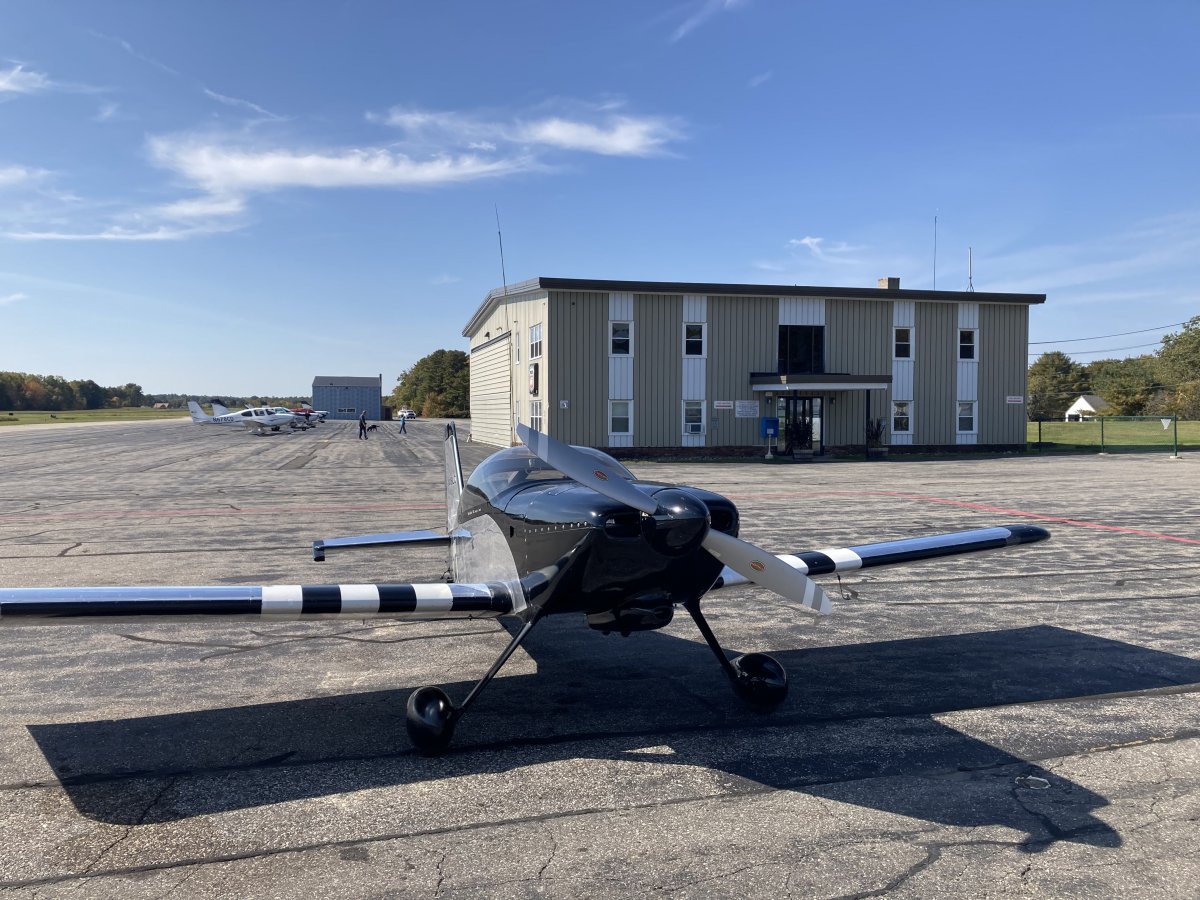 |
|
|
I got to talking with one of the airport hangar owners who invited me down to his hangar to see his RV-8 and his newly-built Sopwith Camel. The RV-8 was older than my plane, but had a really nice paintjob and looked much better than mine cosmetically I'm sorry to say.
|
| |
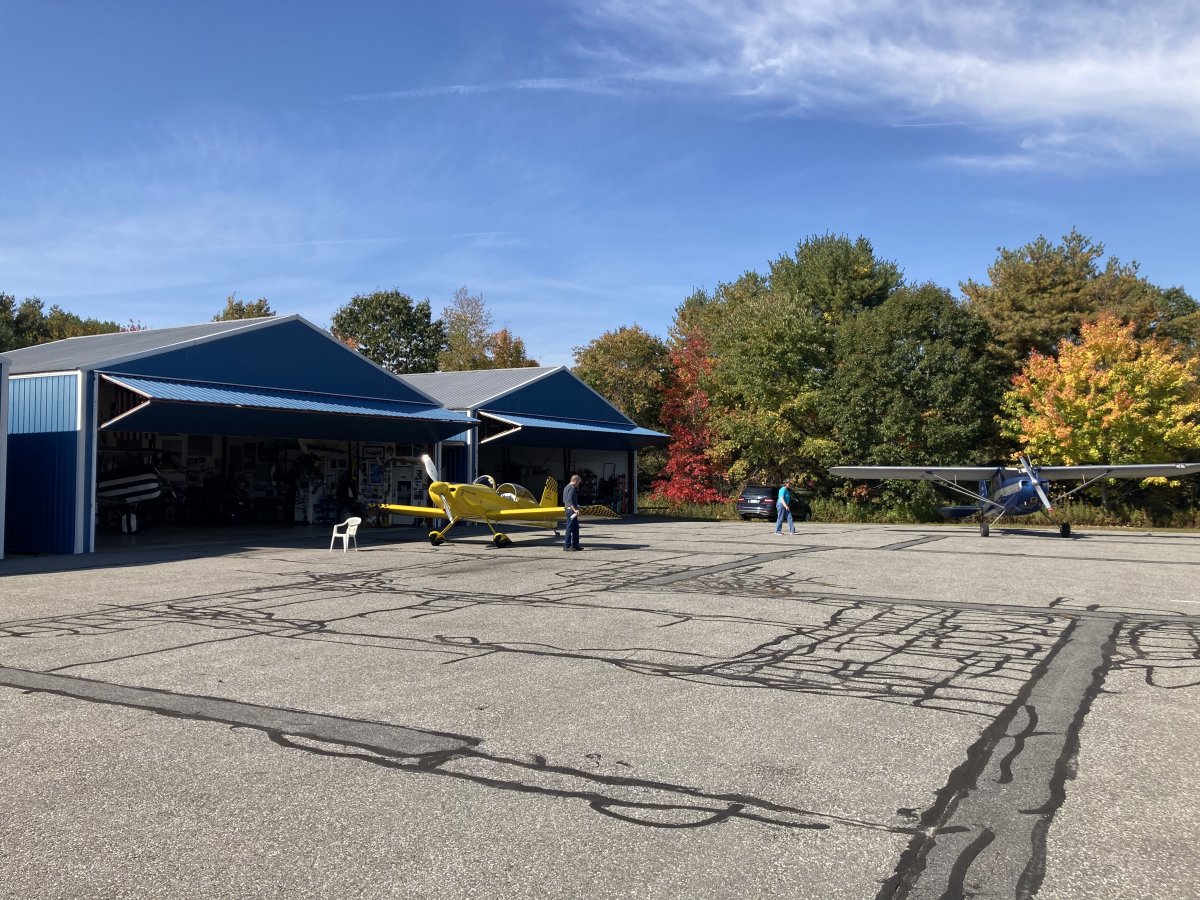 |
|
| The spanking, brand-new Sopwith Camel. I think it only has seven hours on it so far. It is a full-scale replica. Nick built it from an Aerodrome Aero kit. |
| |
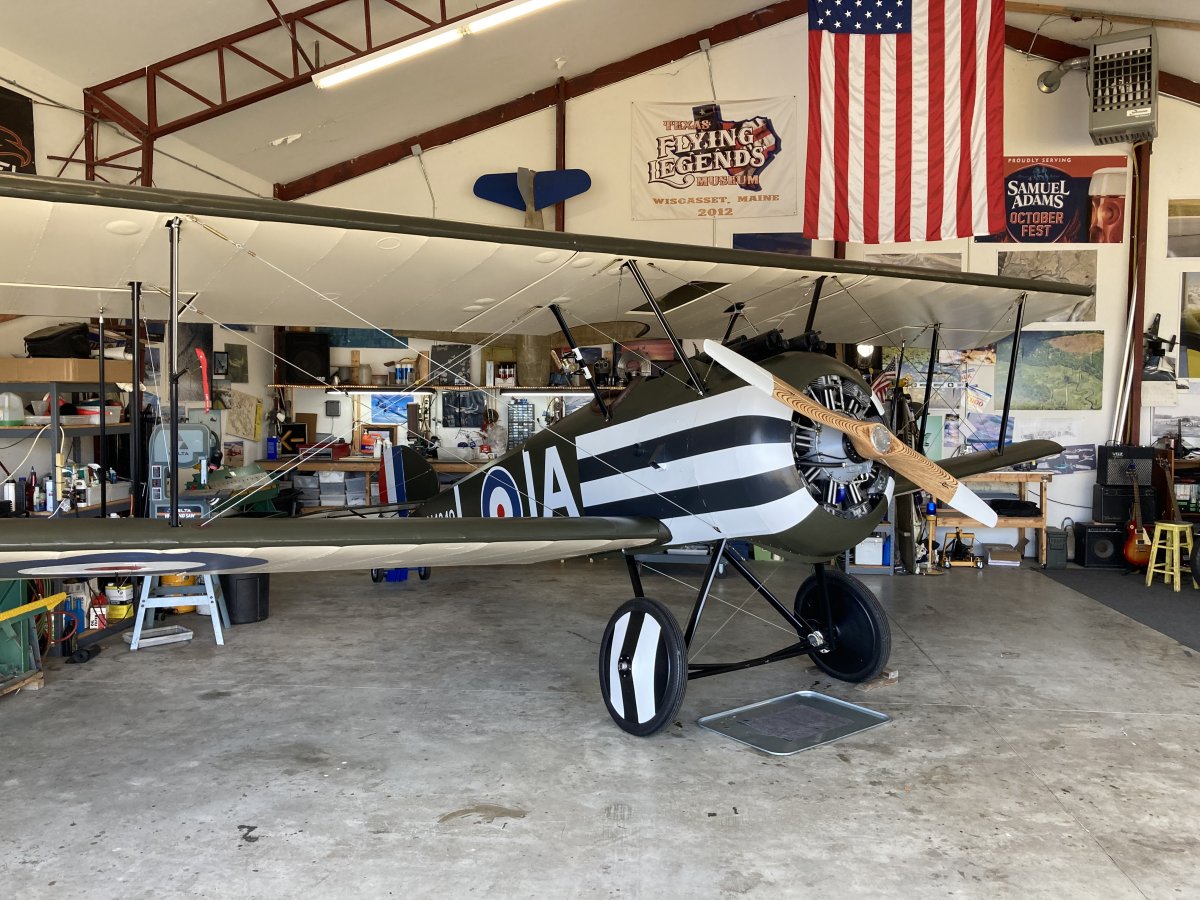 |
|
|
The engine is a Verner radial.
|
| |
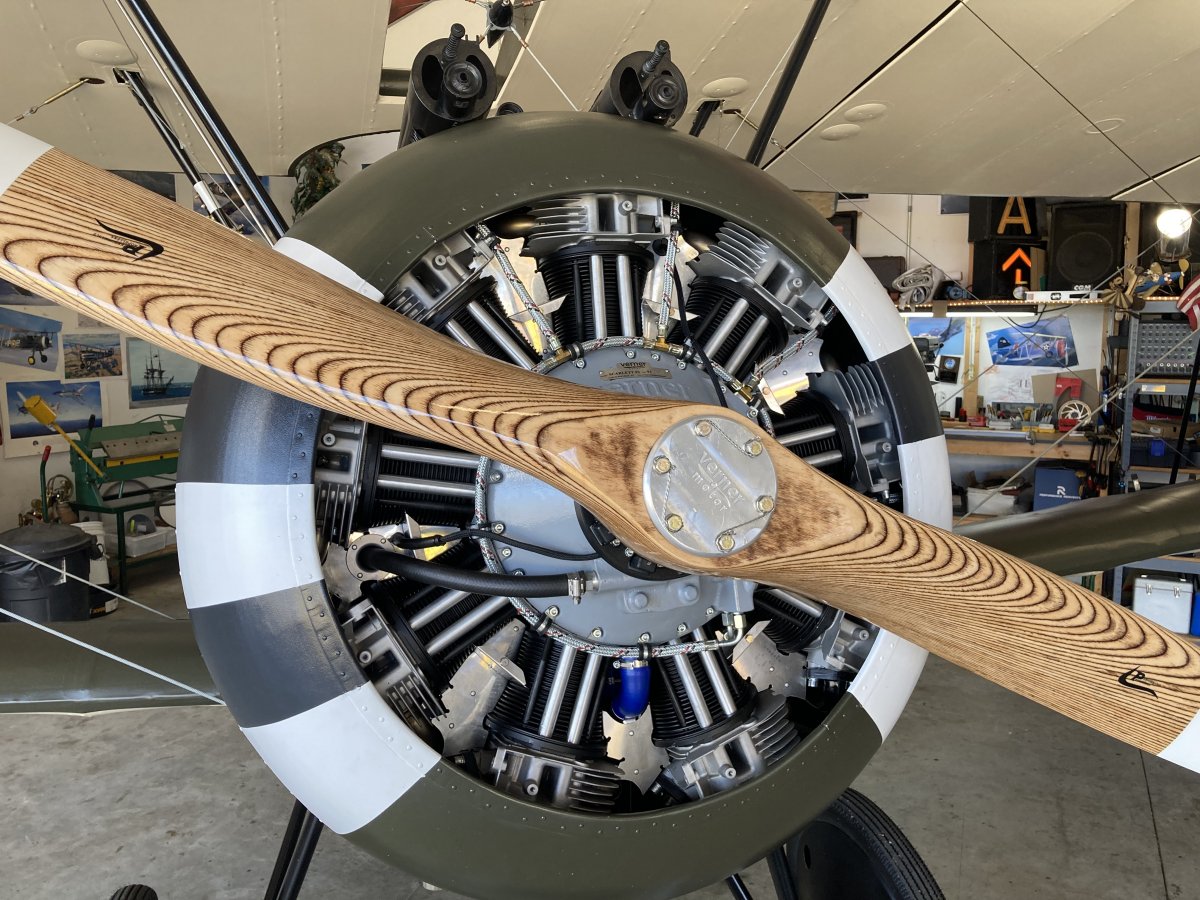 |
|
| The workmanship is outstanding. When I told Nick that the weather conditions don't get much better than what they were right now, he decided to go fly the Camel. Unfortunately, I had to get going and couldn't stick around to watch it. |
| |
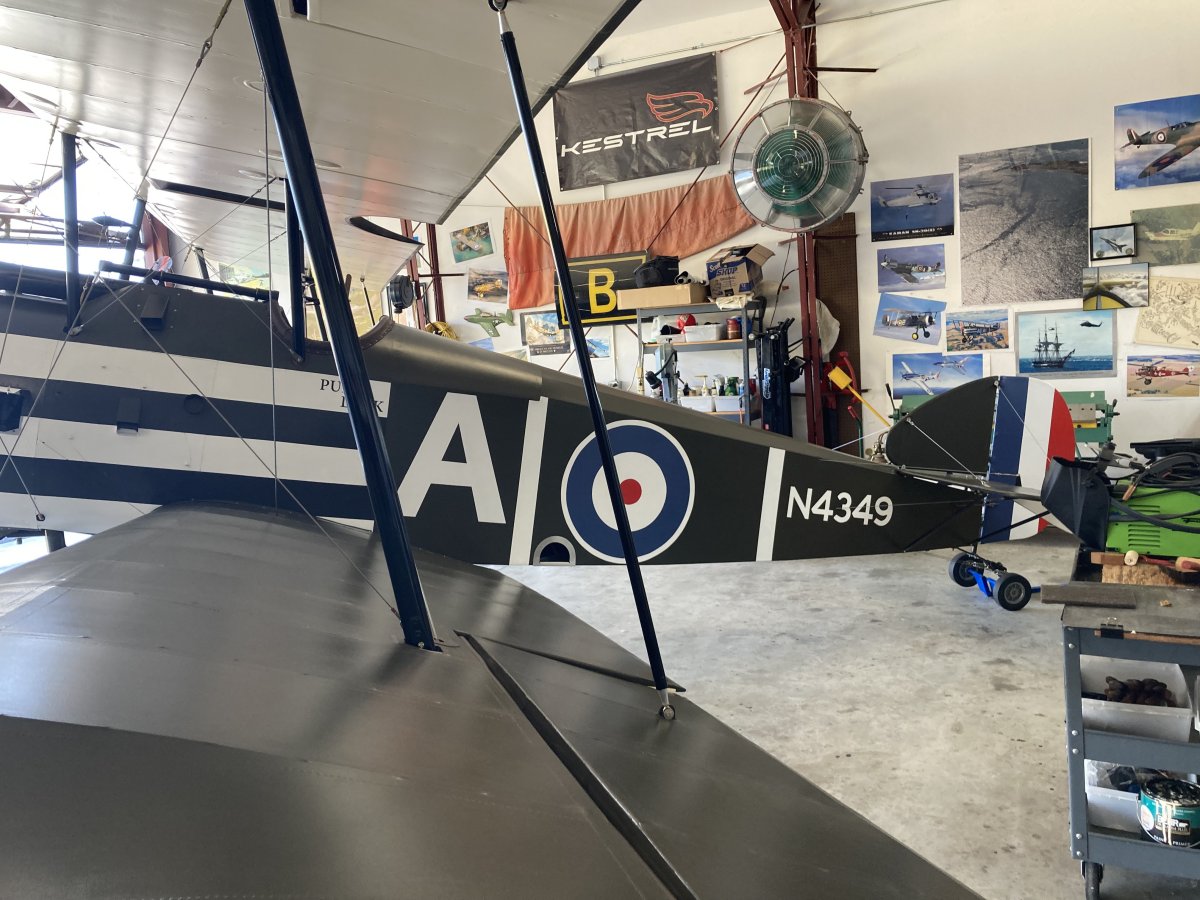 |
|
| Walking back to my plane, I noticed this twin with two five-bladed props, both scheared off. I wonder what's the deal with that? |
| |
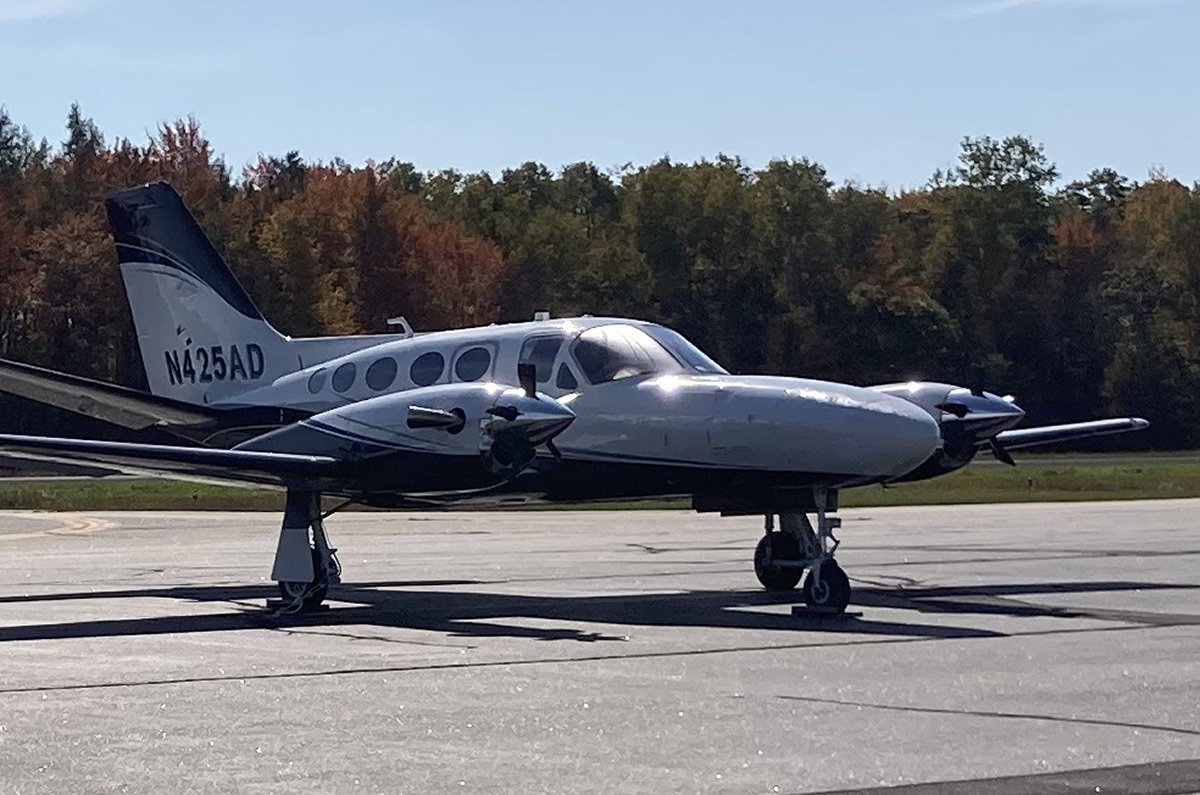 |
|
| The next inlet over from Wiscasset is the Bath Iron Works on the Kennebec River. |
| |
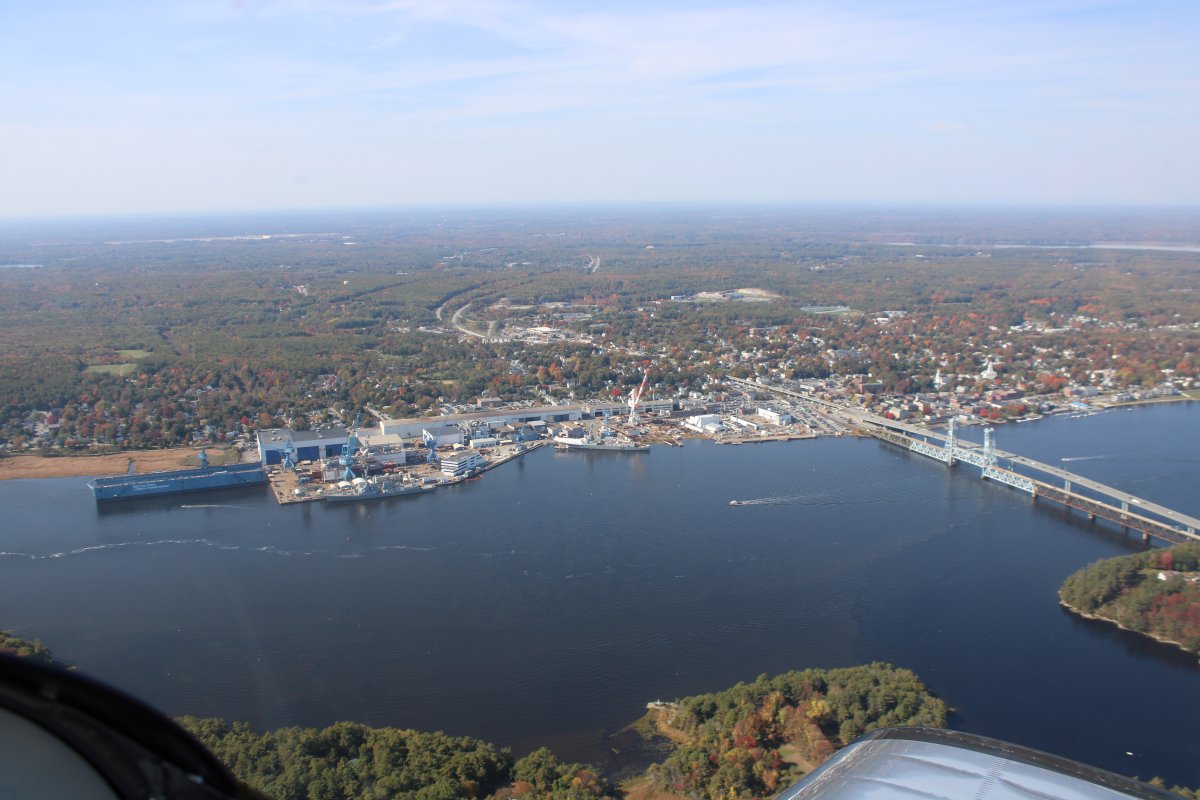 |
|
|
Bath Iron Works builds the Arleigh Burke-class destroyers for the U.S. Navy, along with Ingalls Shipbuilding in Pascagoula, Mississippi. The Burke's are currently the mainstay of the U.S. Navy and will be for the forseeable future. Their replacement was supposed to be the Zumwalt destroyer, also built at Bath Iron Works, but the program was such a fiasco -- stupid expensive and the ships didn't work -- that only three were built and the program cancelled. The Navy's Aegis cruisers are getting long in the tooth and being decommissioned. There is nothing as of yet in the pipeline to replace the Burke's, so they're it. The good news is that they are great ships. Unfortunately the Chinese are building ten comparable ships a year, compared to two a year of the Burkes. The ships used to be named for U.S. naval heroes and leaders like Arleigh Burke, John Paul Jones, Raymond Spruance -- but starting around 2015 they are being mostly named for politicians. Of course, everything is political now.
|
| |
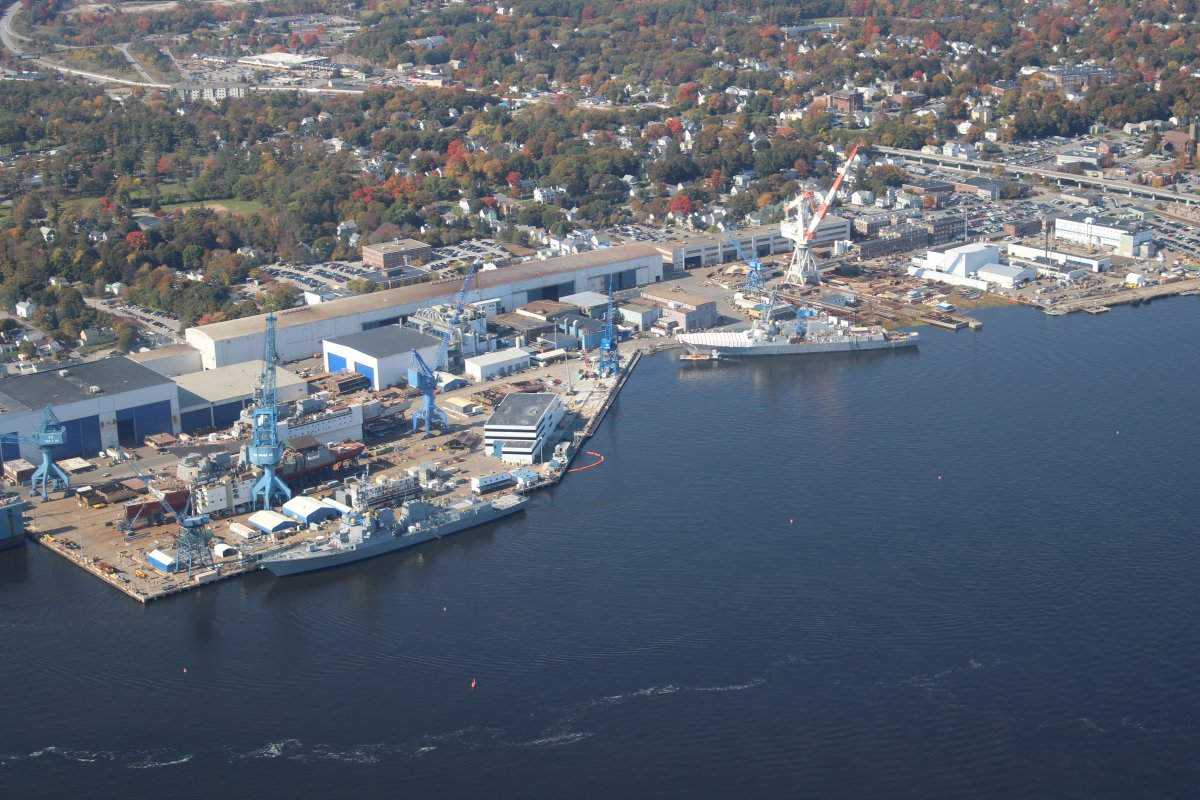 |
|
| Looking up the Kennebec River. Notice the big floating dry dock at lower left. |
| |
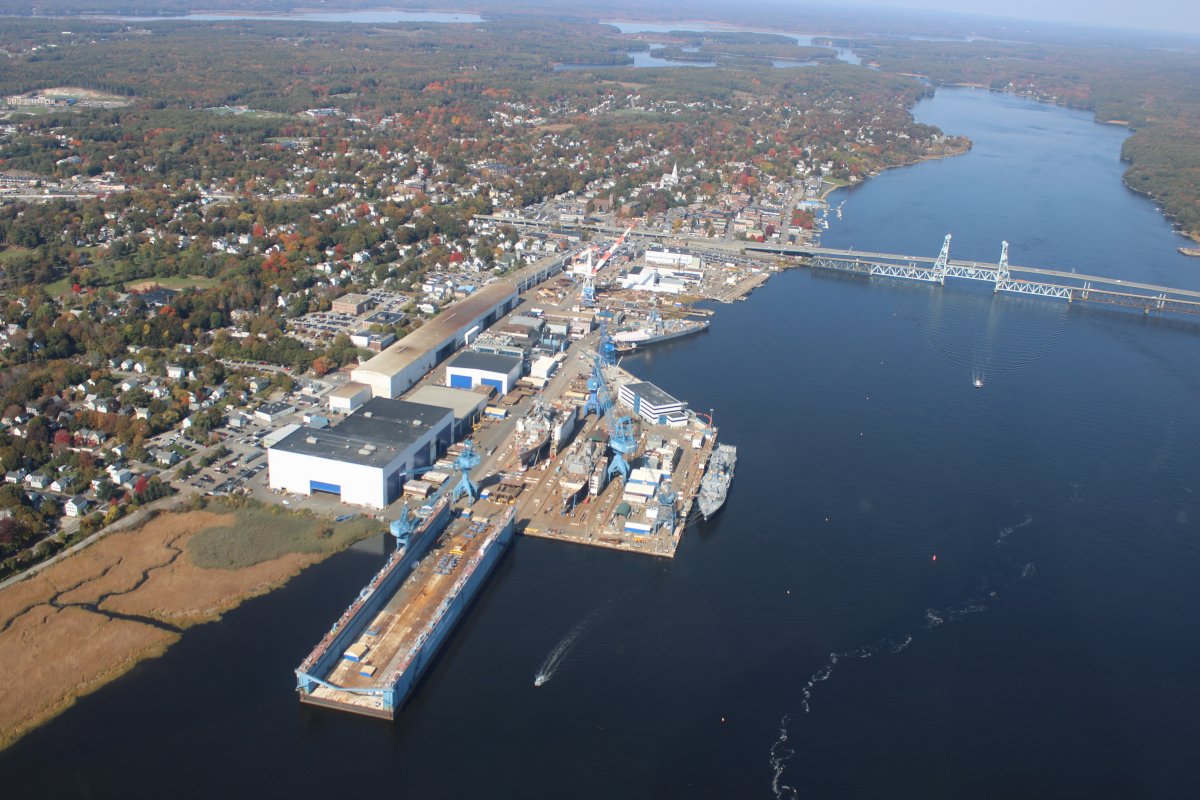 |
|
|
How many Arleigh Burke's do you see?
|
| |
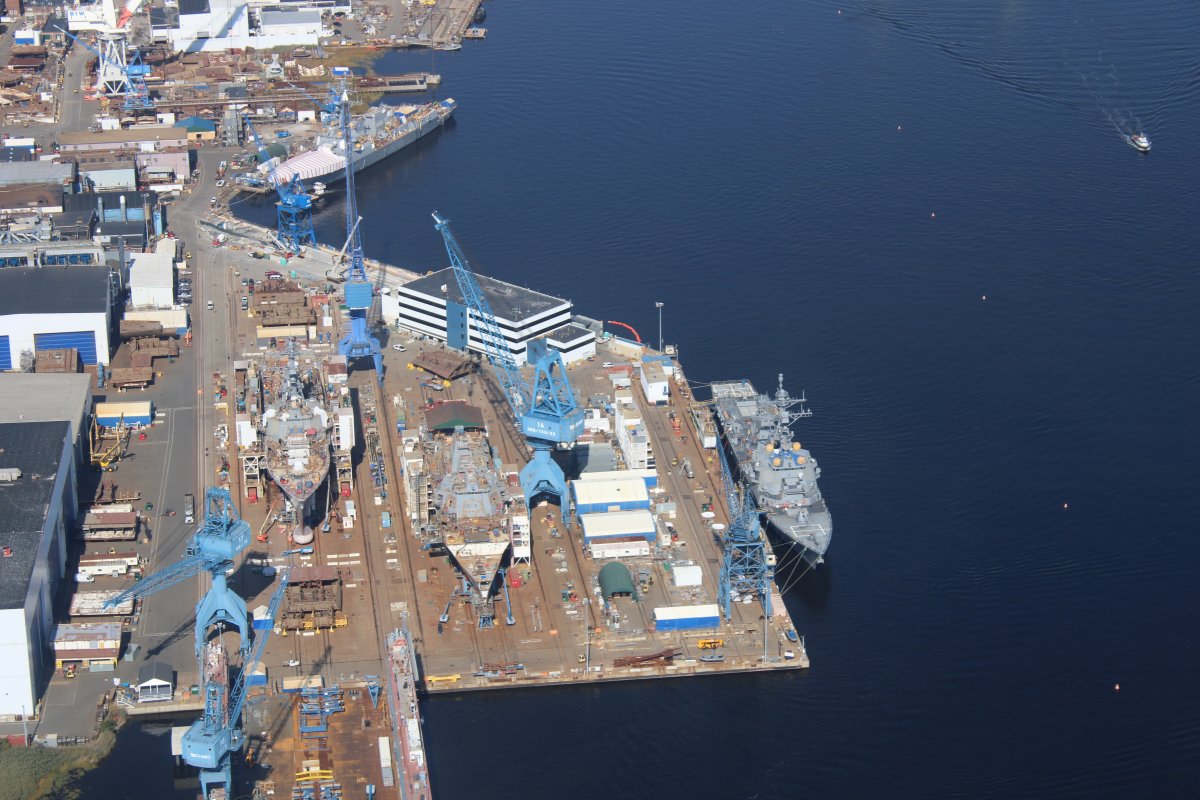 |
|
|
Just a few miles west and I was over Brunswick Executive Airport (KBXM). Of course, this used to be Brunswick Naval Air Station. I was stationed here in Patrol Squadron 26 from 1983 ti 1986. It was my first real job in the Navy. The base closed in 2011 and is now a public airport.
Construction of the facility began in mid-October 1942 and they were flying anti-submarine patrol missions by January 1943. The facility was officially Naval Air Station Brunswick in 1951.
|
| |
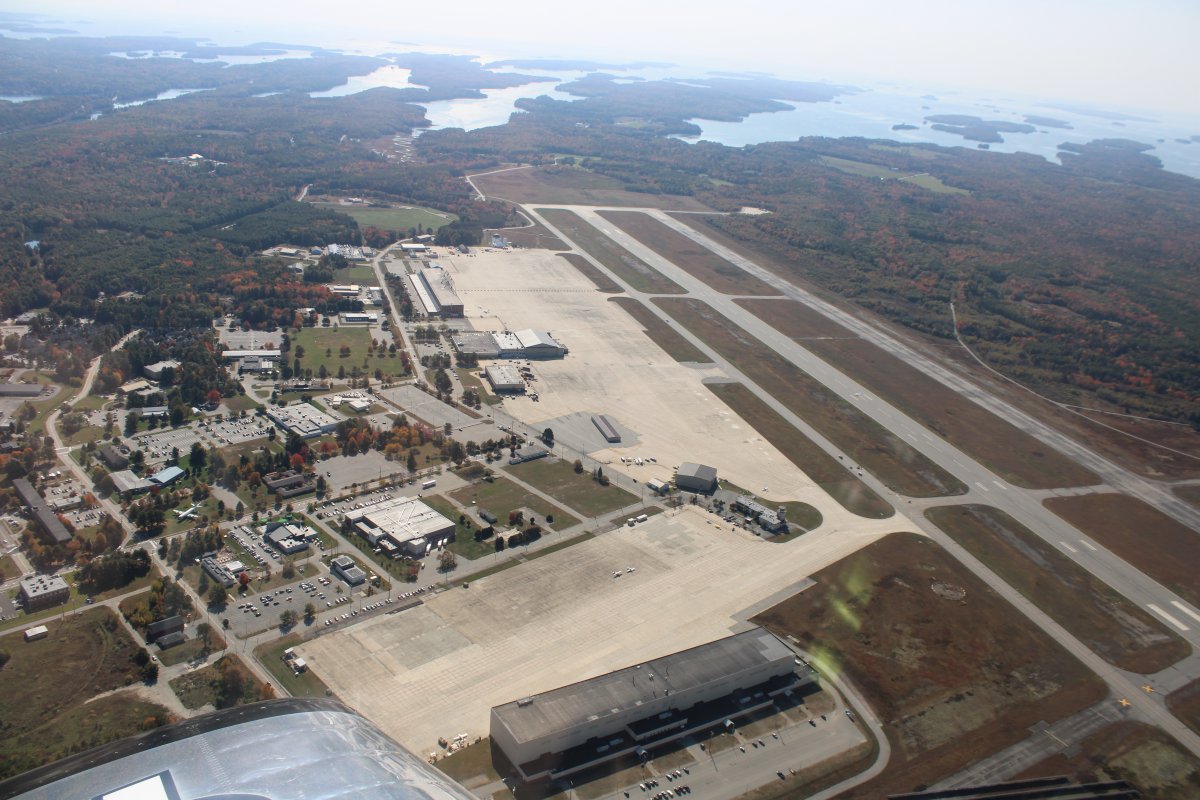 |
|
| There was no traffic in the pattern so I flew around and took a good look at the base, trying to see things I remembered. |
| |
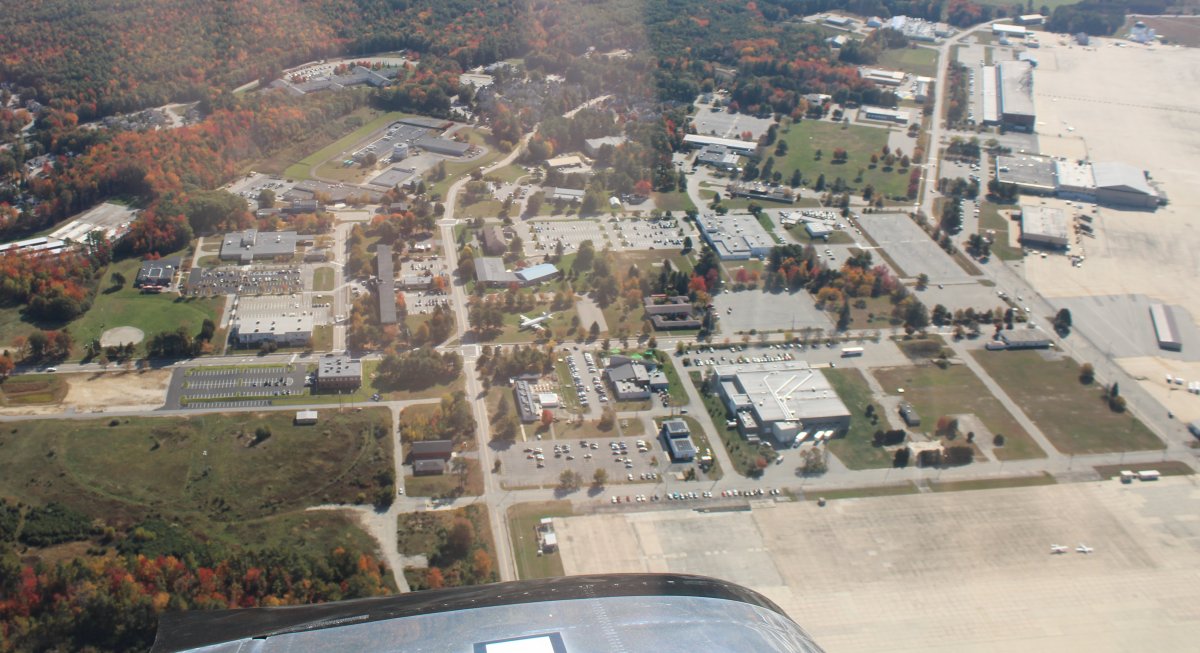 |
|
| Looking south gives you an idea how jagged the Maine coast is. |
| |
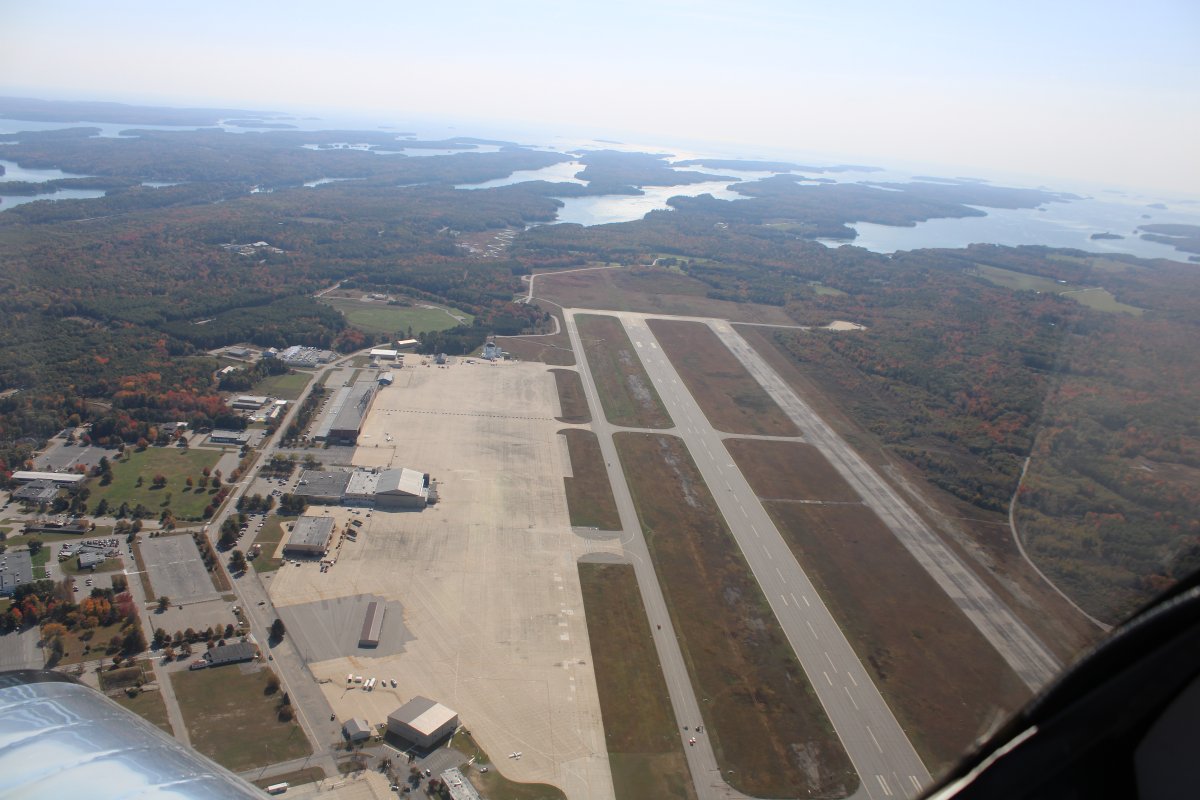 |
|
|
The long hangar at upper right is Hangar Five where my squadron was located when I joined it. I know it well. What I didn't know was that the hangar was brand new and my squadron VP-26 was the first squadron to use it. Actually, it held two squadrons at a time with six bays, room for three planes for each squadron. The hangar took two and a half years to build and cost $15 million. VP-26 also had relatively new P-3C Update IIs when I joined it. I didn't know how lucky I was at the time flying in new planes and working in a new hangar.
|
| |
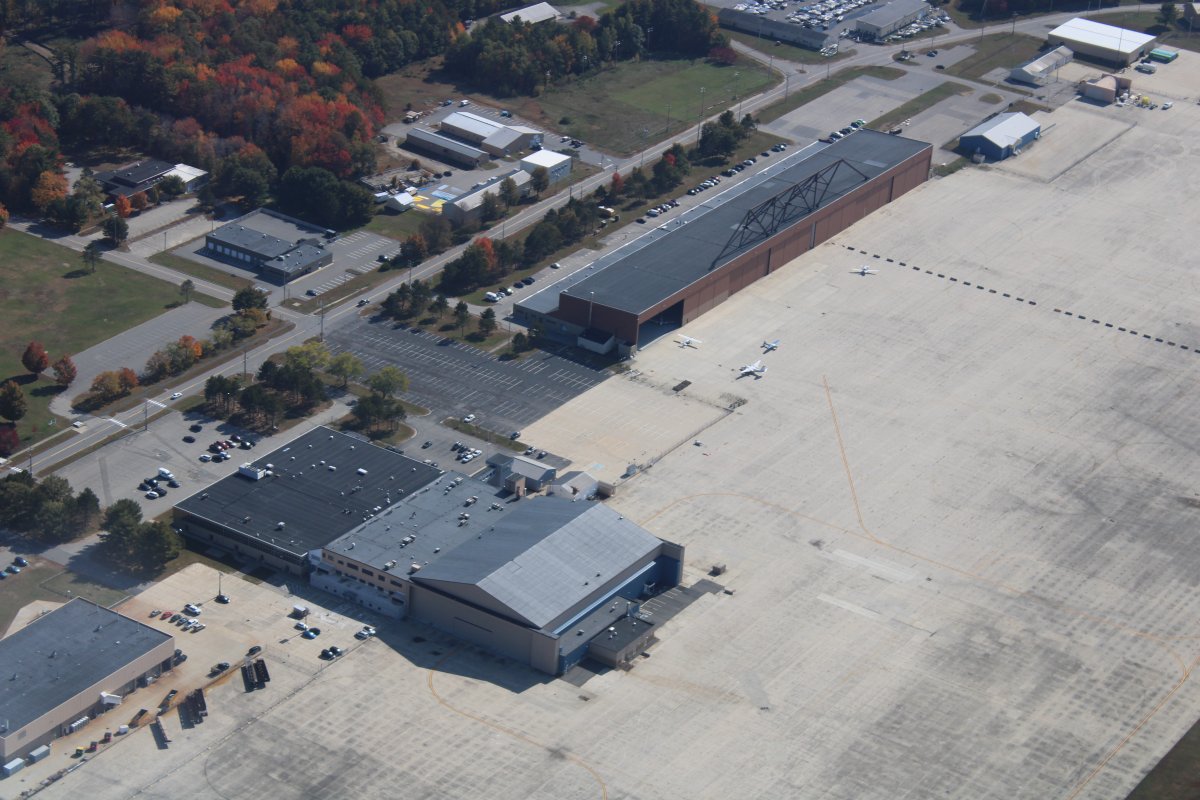 |
|
| |
| |
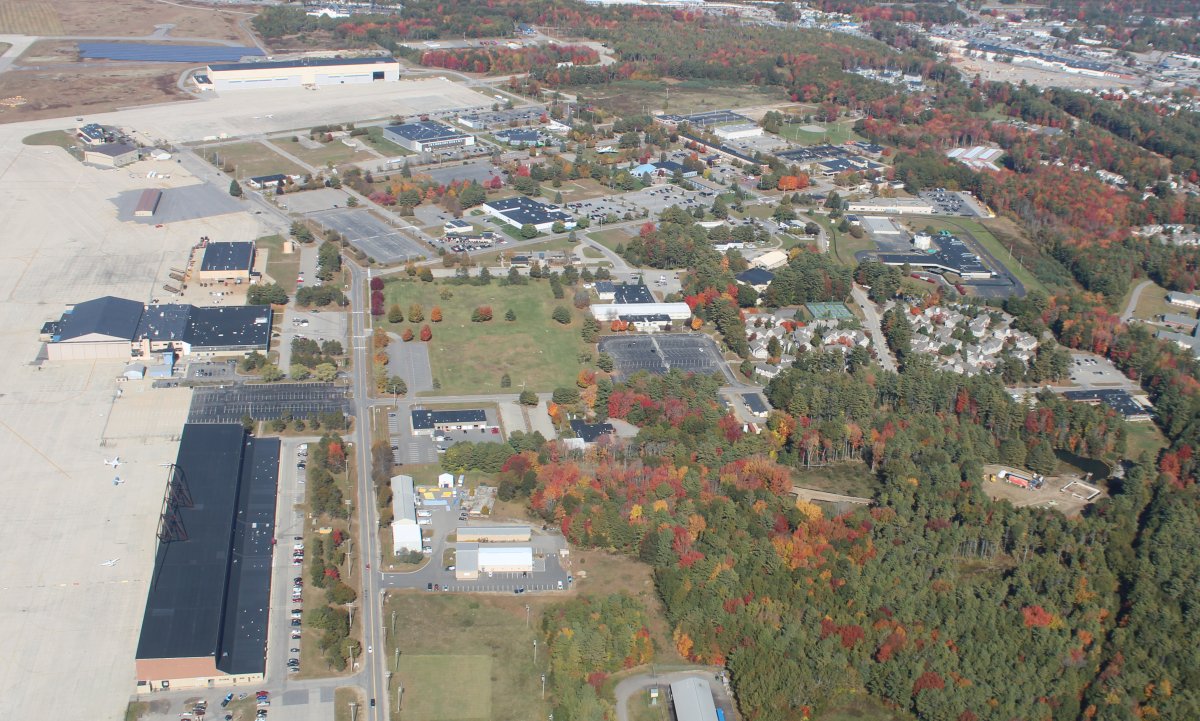 |
|
|
|
| |
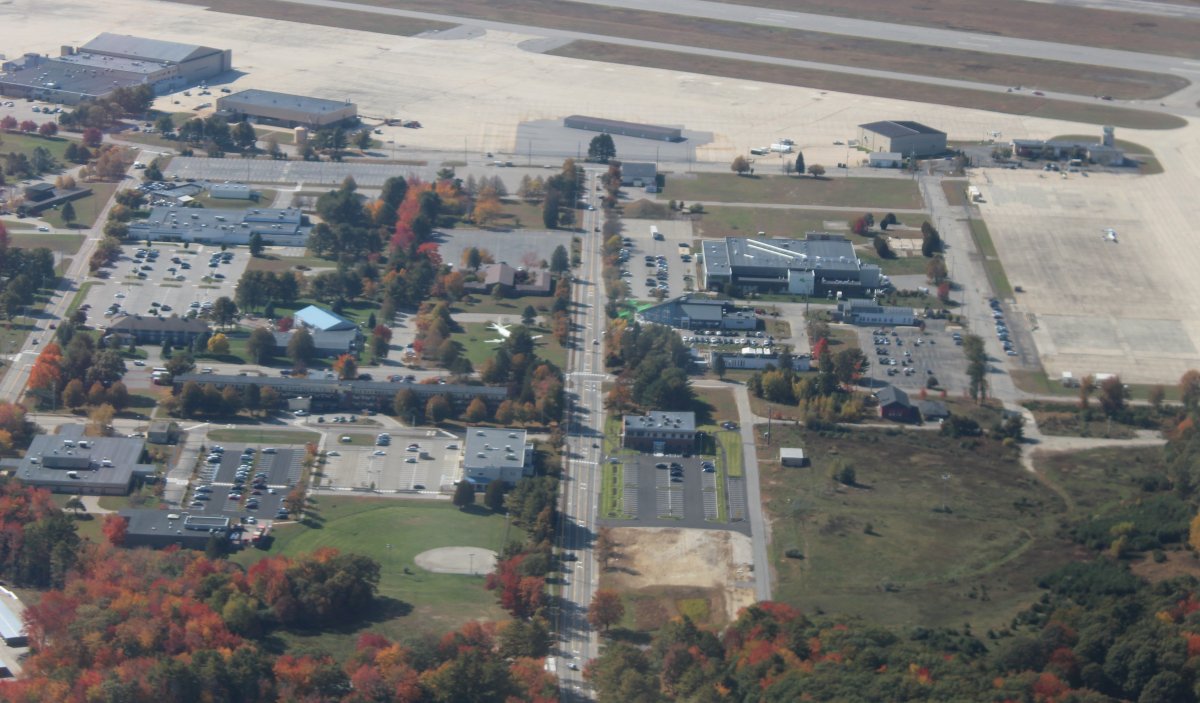 |
|
| |
| |
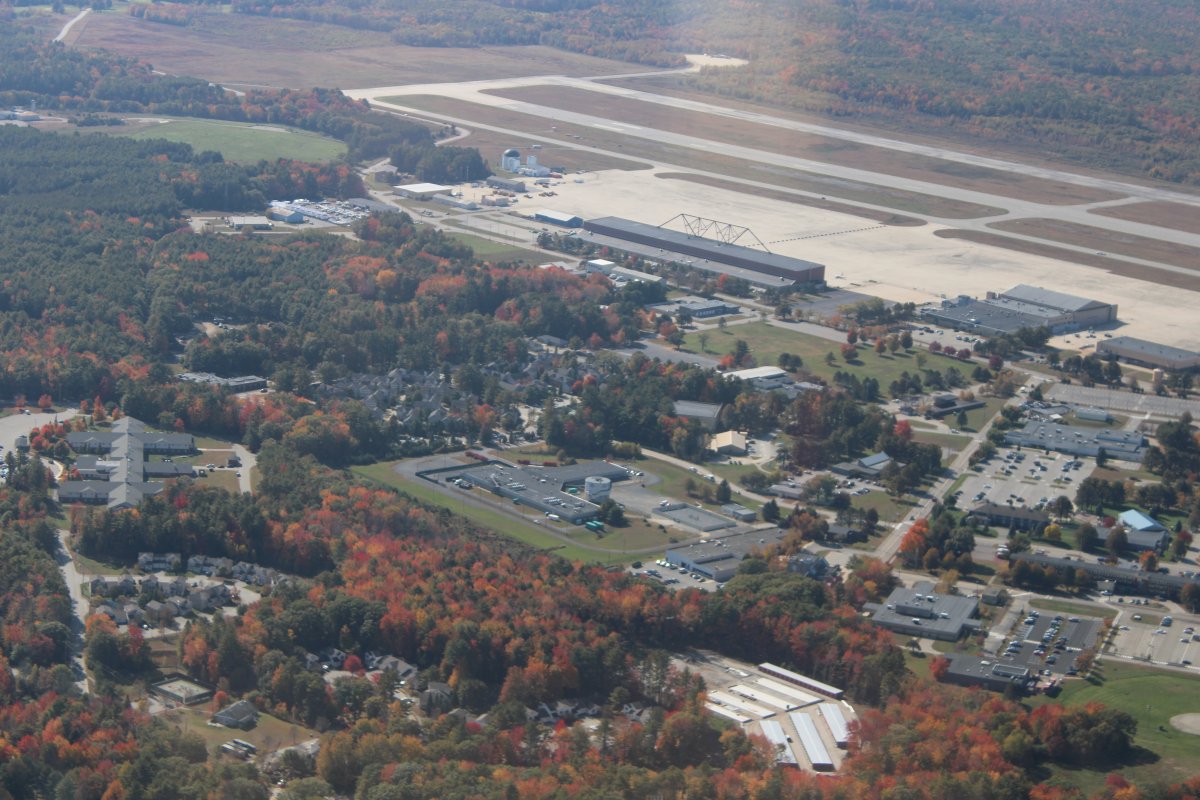 |
|
| A good look at Cooks Corner, just east of the base. That's the Androscoggin River at upper right. I remember commuting along that highway running alongside the river. The small town of Brunswick is visible at center top. |
| |
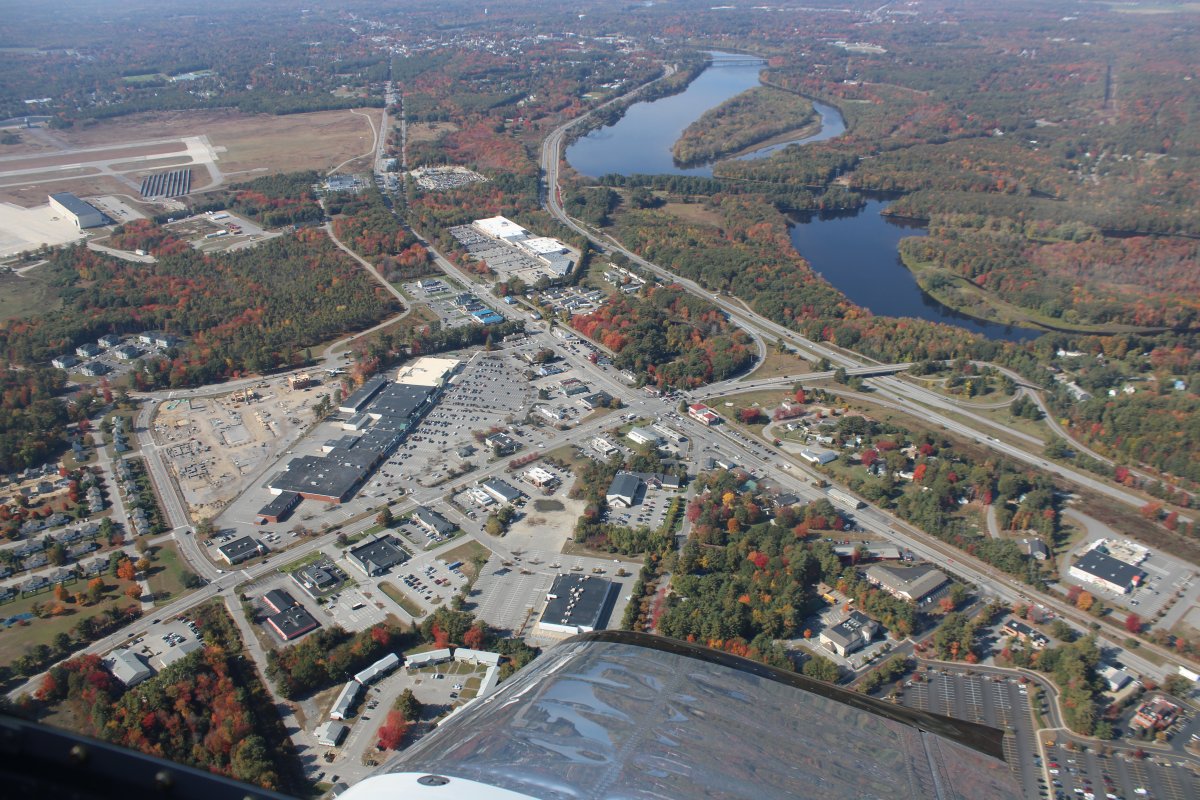 |
|
| Walmart on the left, Lowes on the right. They weren't there in the 80s. |
| |
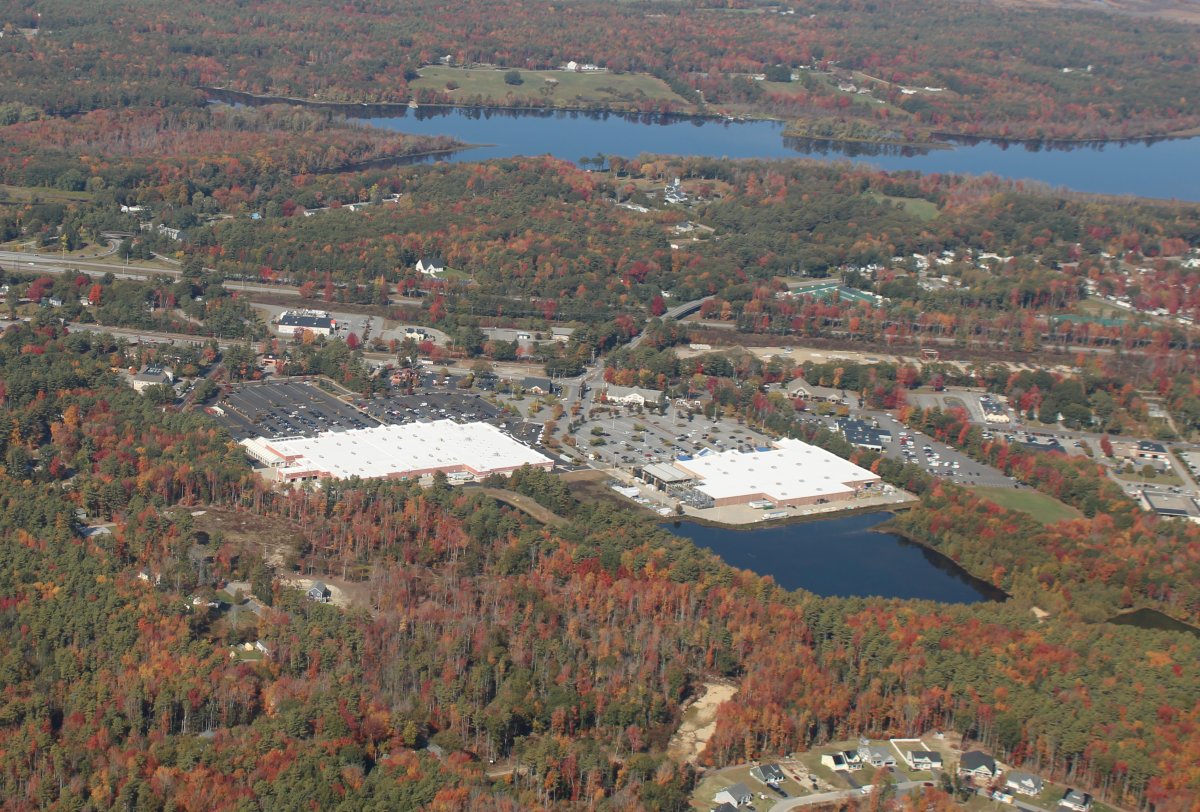 |
|
|
Looking northeast up the Androscoggin River. I'll have to fly it someday.
|
| |
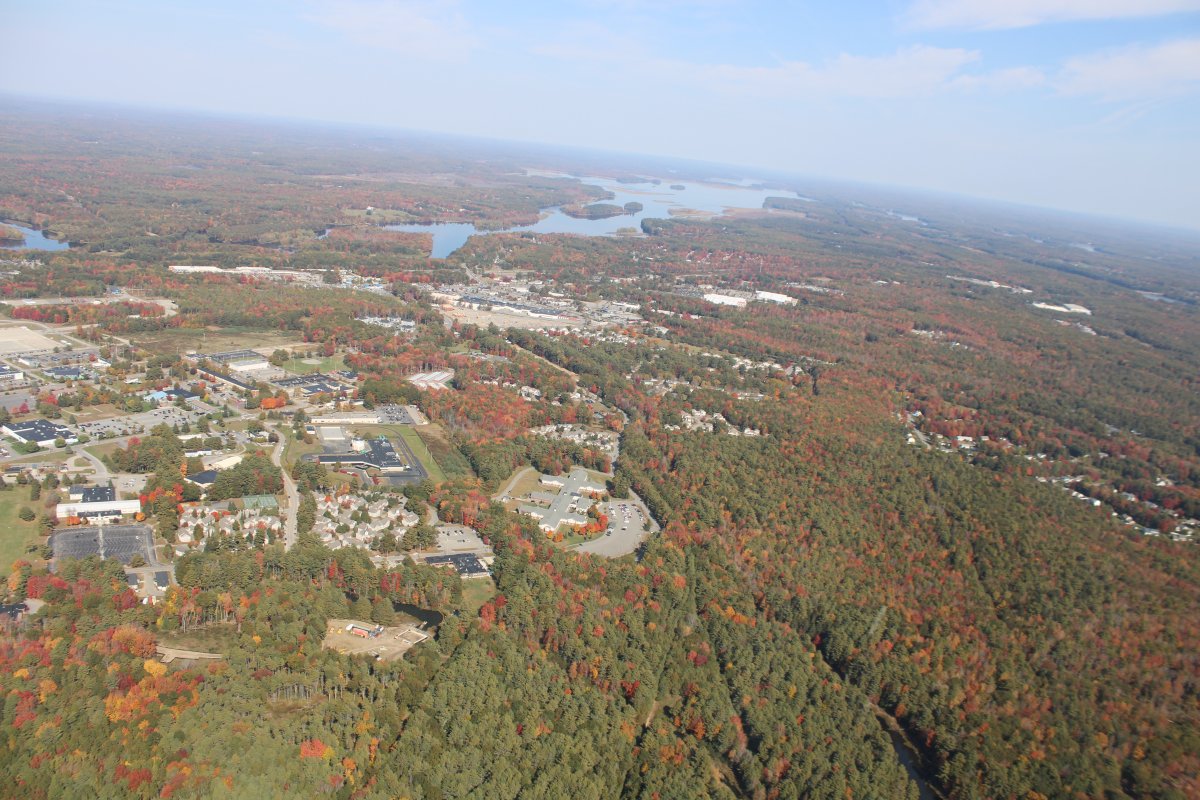 |
|
|
Looking for all the old buildings I remember: the Navy Exchange, the Clinic, the ASWOC (anti-submarine warfare operations center), the Simulator building, Base Headquarters, BOQ, Chapel, Officers Club. Some where gone but most are still there, being used for commercial things now.
|
| |
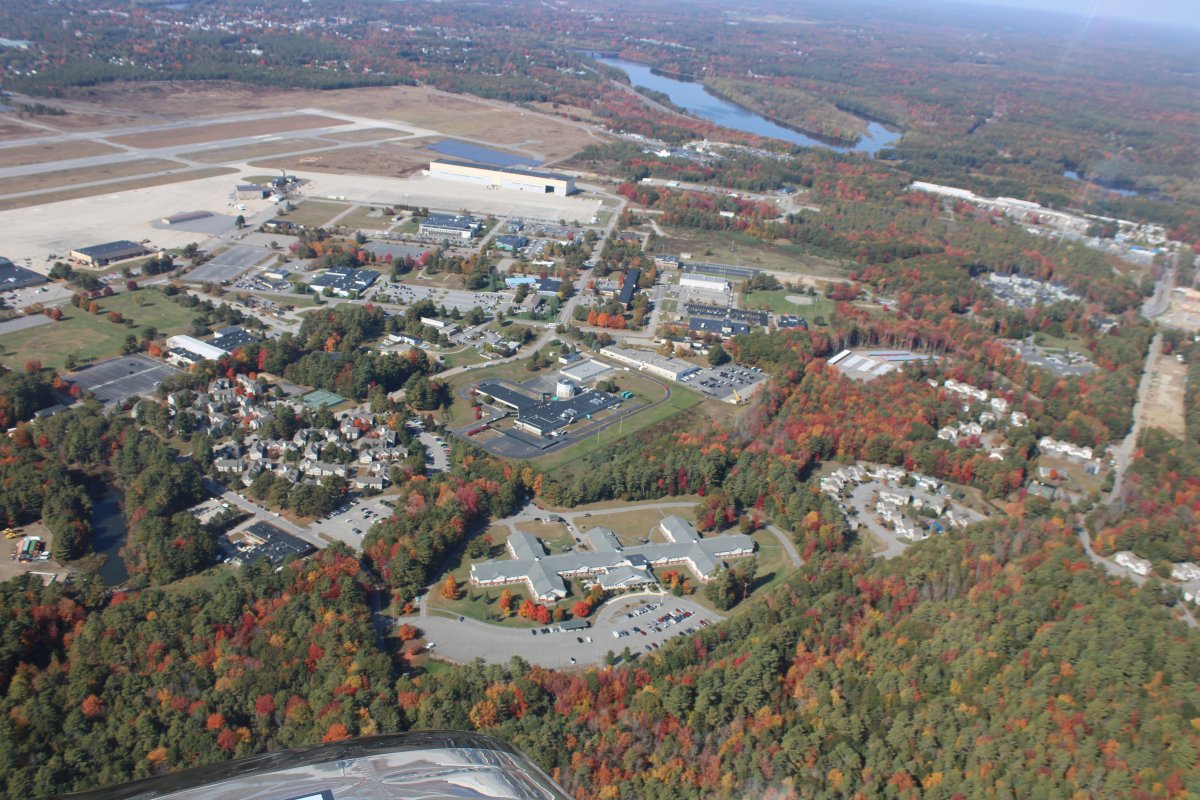 |
|
| Another shot of the Androscoggin River running northwest. The town of Brunswick is just to the left of that bridge. |
| |
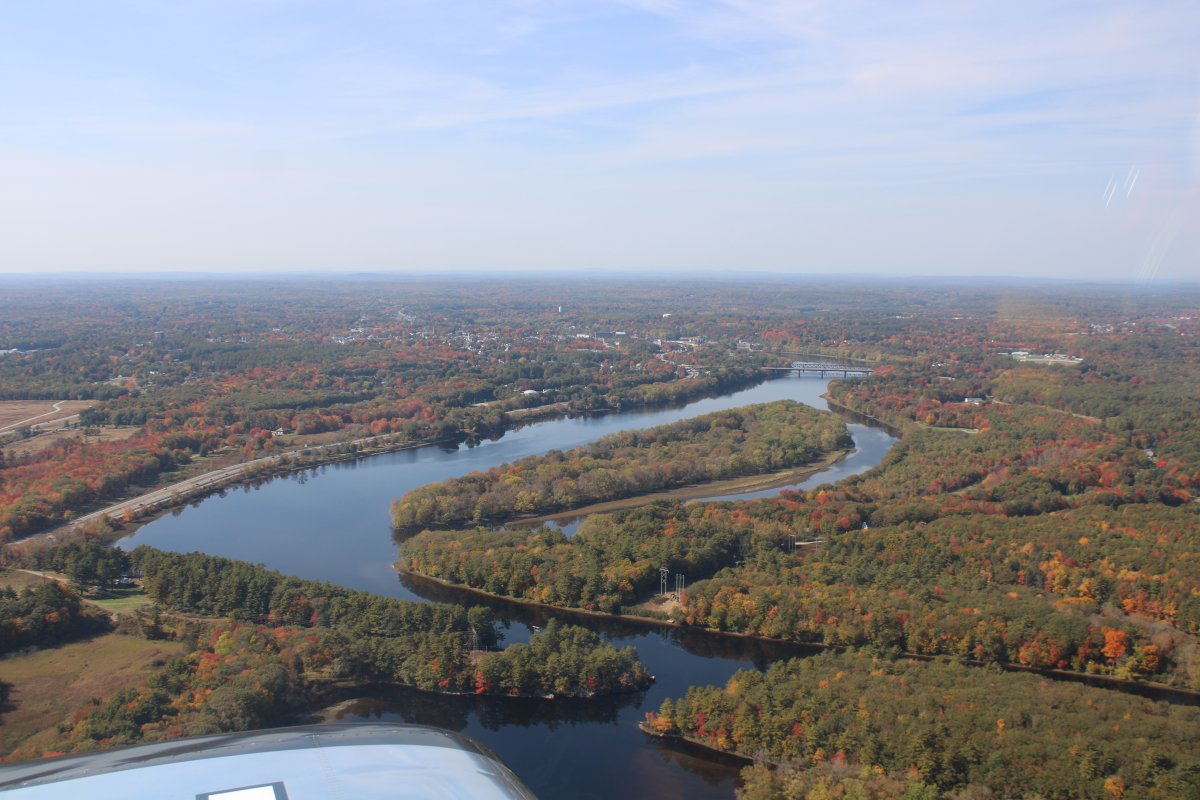 |
|
|
On final for runway 19 Left. It's an 8,000 foot runway.
It turns out landing on 19 was a mistake. Winds were light and variable and I could have landed on runway 1R. What I didn't know what that the main taxiway was under renovation and completely closed with the exception of the northernmost turnoff. So I landed, taxiied all the way to the southern end, waited for another plane to land, and then had to taxi the length of the 8,000 foot runway to get to the northern turnoff. Live and learn.
|
| |
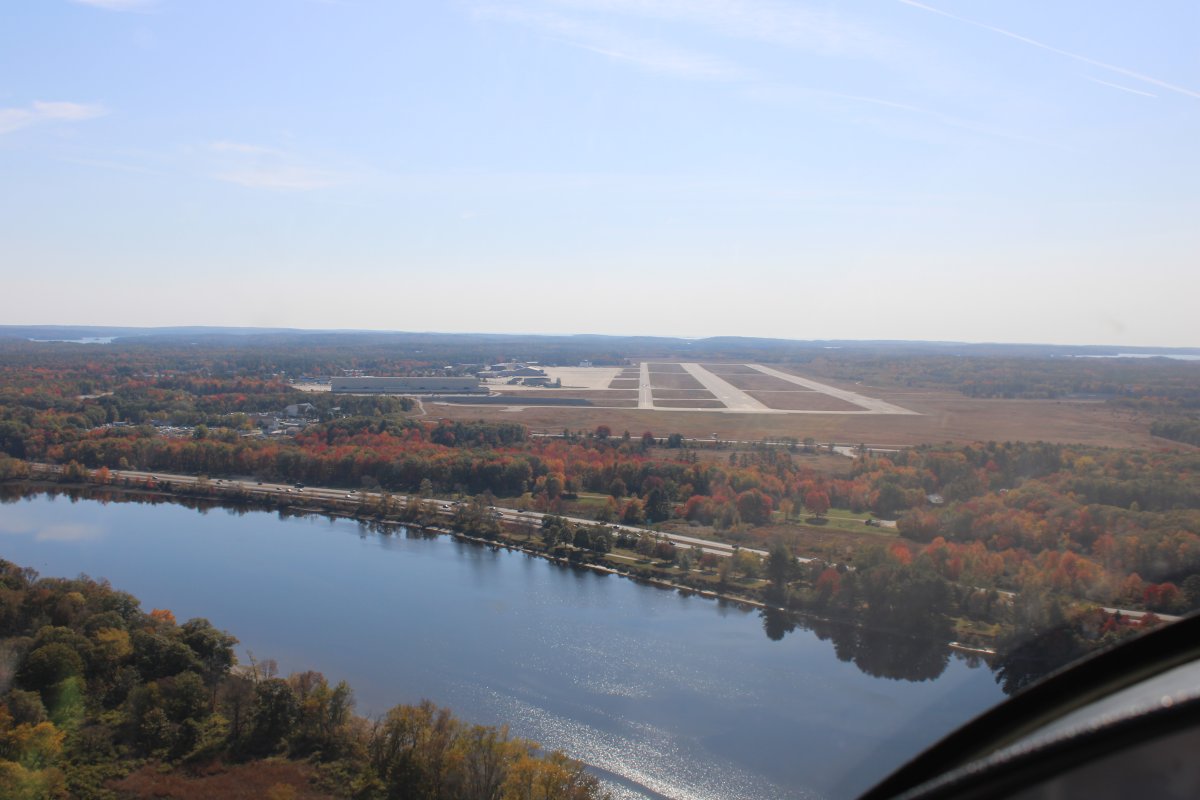 |
|
| Parked on the ramp at Brunswick Executive. As you can see, fencing security is over the top here. I hope the expensive fence was built in the P-3 days prior to 2011 and not afterwards. |
| |
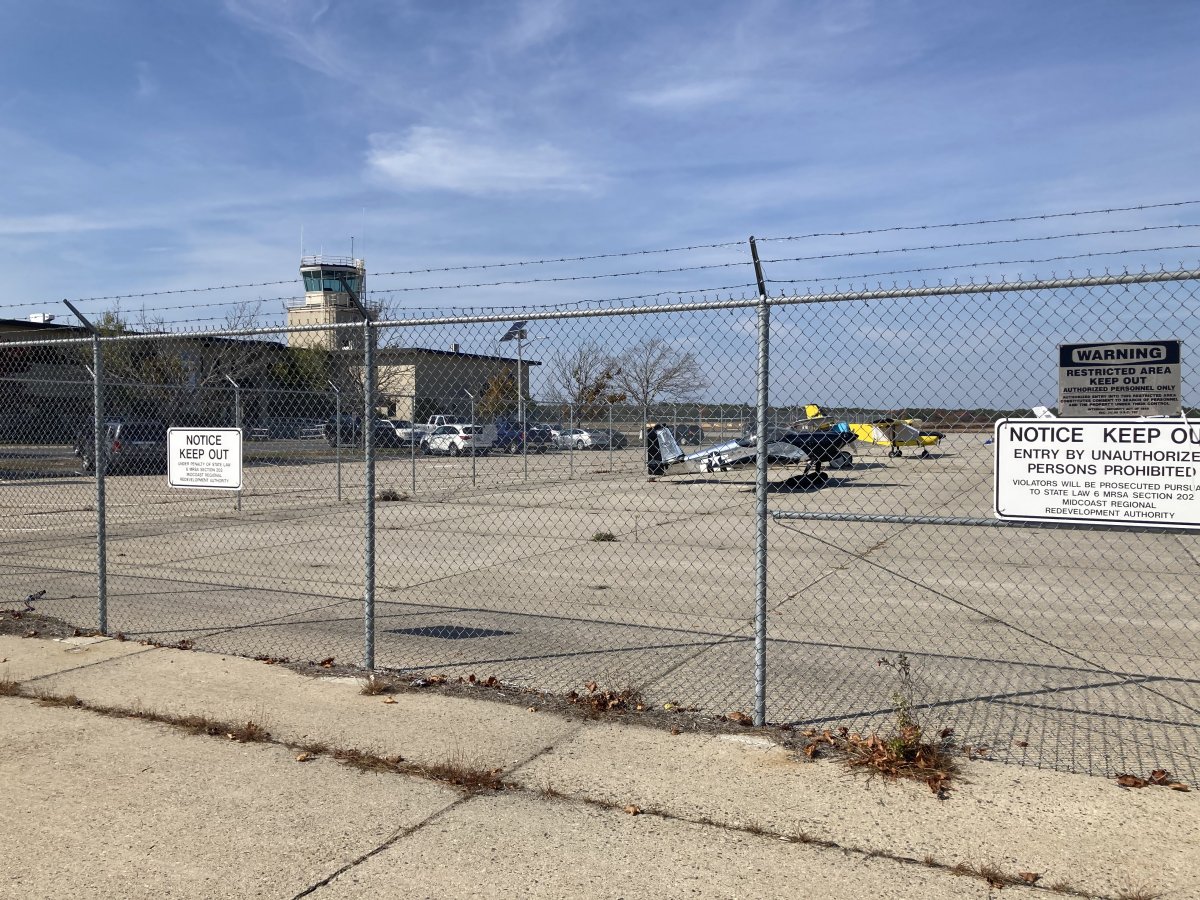 |
|
|
When I was here four years ago I learned of the Brunswick Naval Air Station Museum on base in what had been the Chapel. But it was only open on Wednesdays and Saturdays. So I couldn't go then. But today was Wednesday so it was on. It was a short walk from the old Tower/Terminal building and now FBO Building, to the Chapel. The museum was contained in this single large room that was obviously the sanctuary. I'm sorry to say I don't think I attended a single service in this church back in the 80s but in my defense I must say work kept me pretty busy, to put it mildly.
There is also a complete P-3 on static display a short walk from the museum.
|
| |
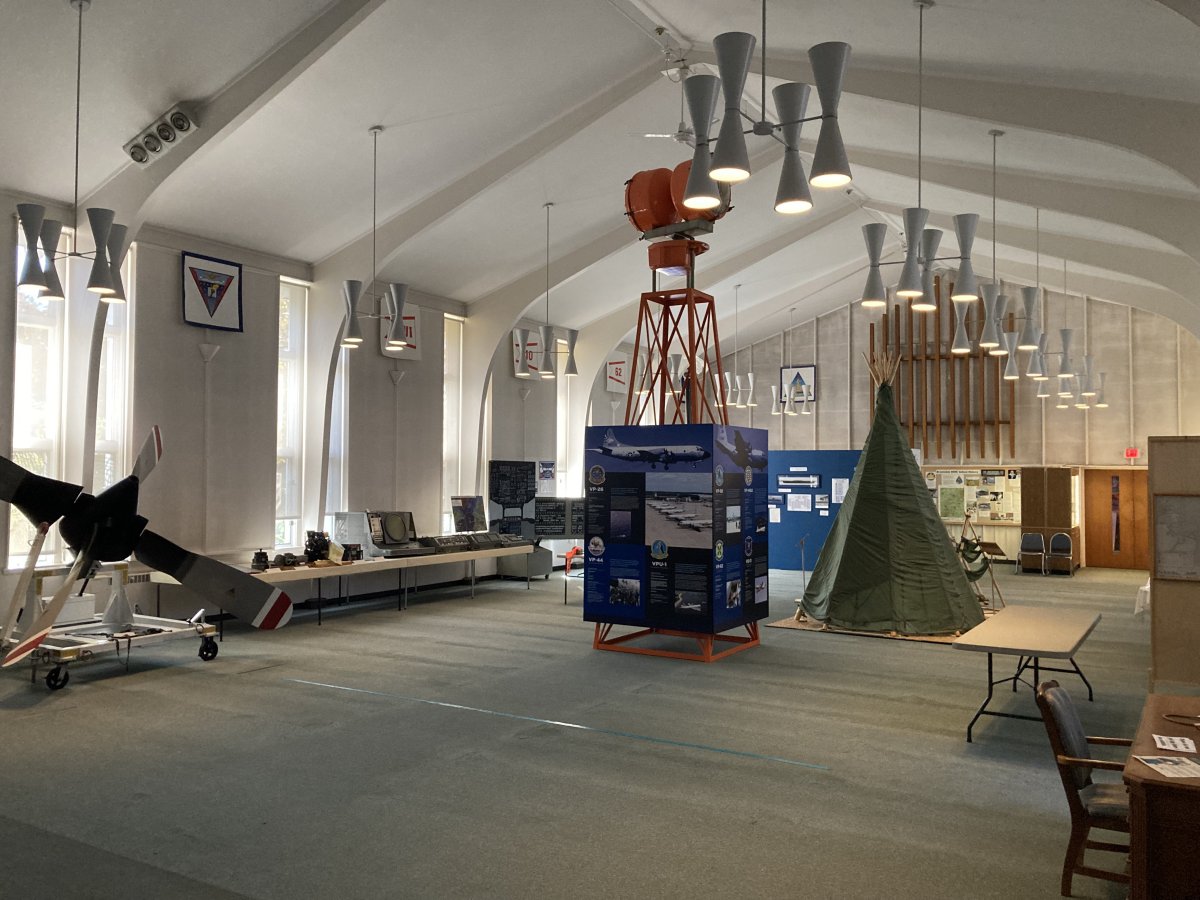 |
|
| Back in the day, we had six patrol squadrons in Wing Five. |
| |
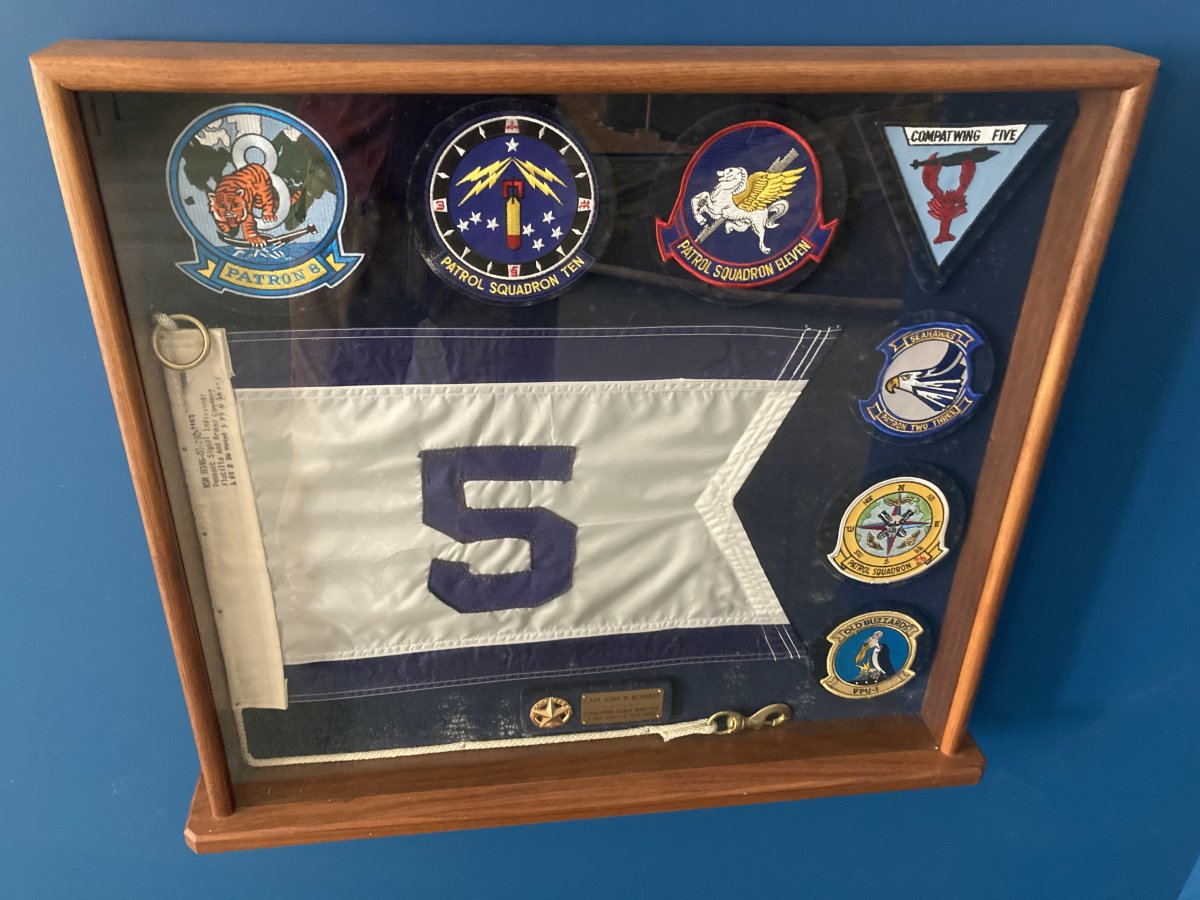 |
|
|
One of the massive four blade propellers on each of the P-3's four T-56 engines.
|
| |
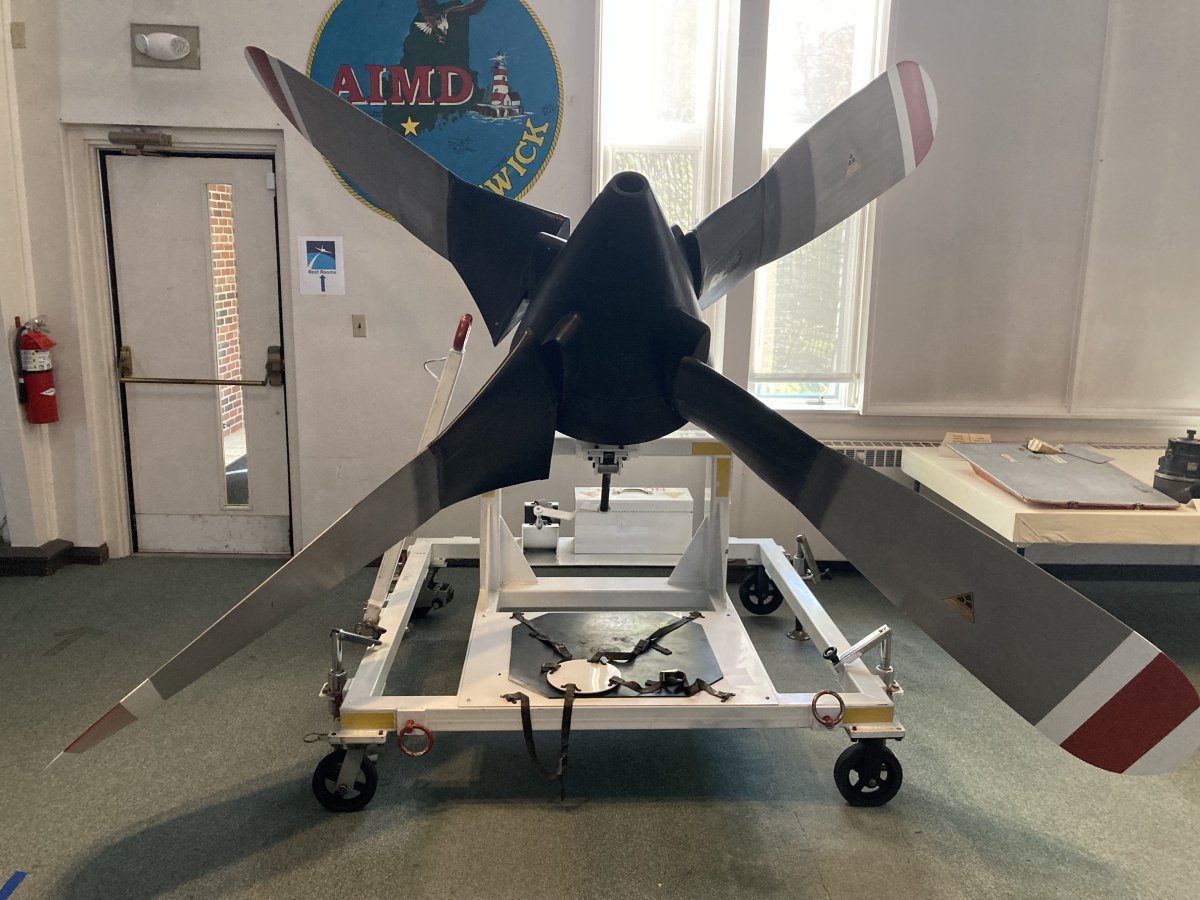 |
|
| Look how wide the aluminum prop blade is! |
| |
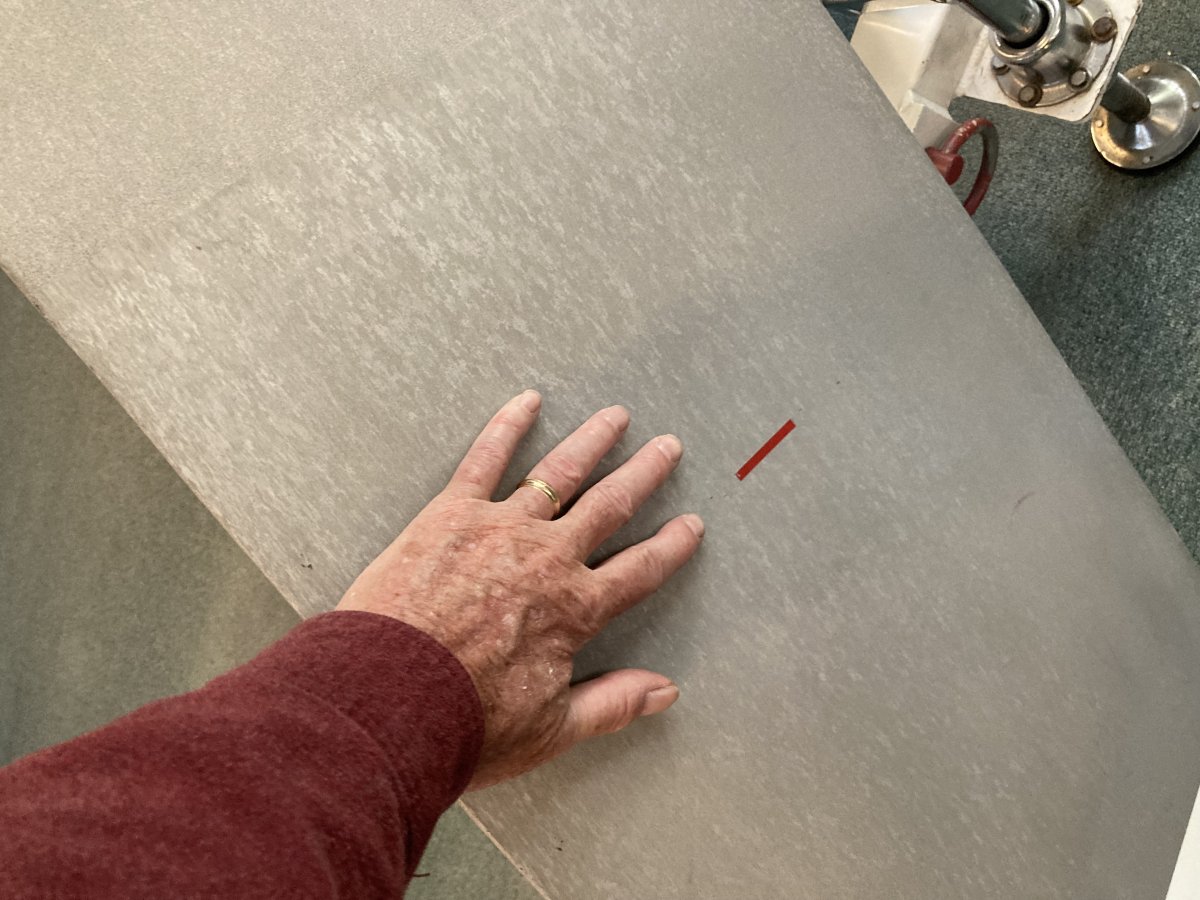 |
|
| Ah, this brings back memories. This was the display and keyboard at the Tactical Coordinator's (TACCO) station where I sat. I must have pressed that "Hook Verify" button a million times. In a way, the trackball and "Hook Verify" button was ahead of its time; a forerunner of the mouse and right click/left click buttons. |
| |
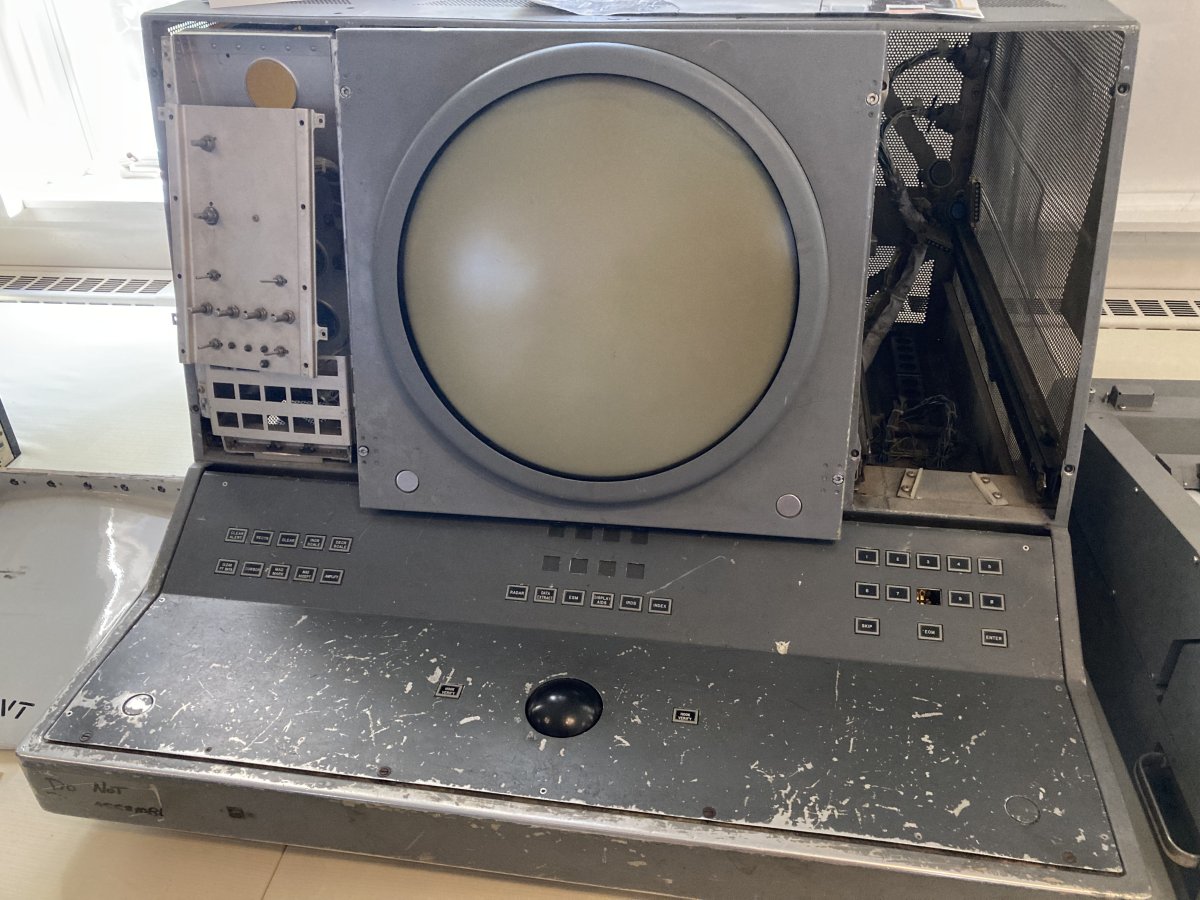 |
|
| More memories. The Litton 72 (LTN-72) inertial navigation unit I used when I was a Navigator/Communitor (NAVCOM). A new NFO sits as NAVCOM for his first year or so in the squadron, then moves up to the TACCO position. This box would give us our position to within two nautical miles accuracy. Two miles, are you kidding me!? But in the 80's, that was pretty darn good. GPS didn't show up in the P-3s until the mid-90s and even then it was a stand-alone box and brand new. Before the LTN-72, the P-3s would be lucky to know where they were over the ocean within 10-20 miles. |
| |
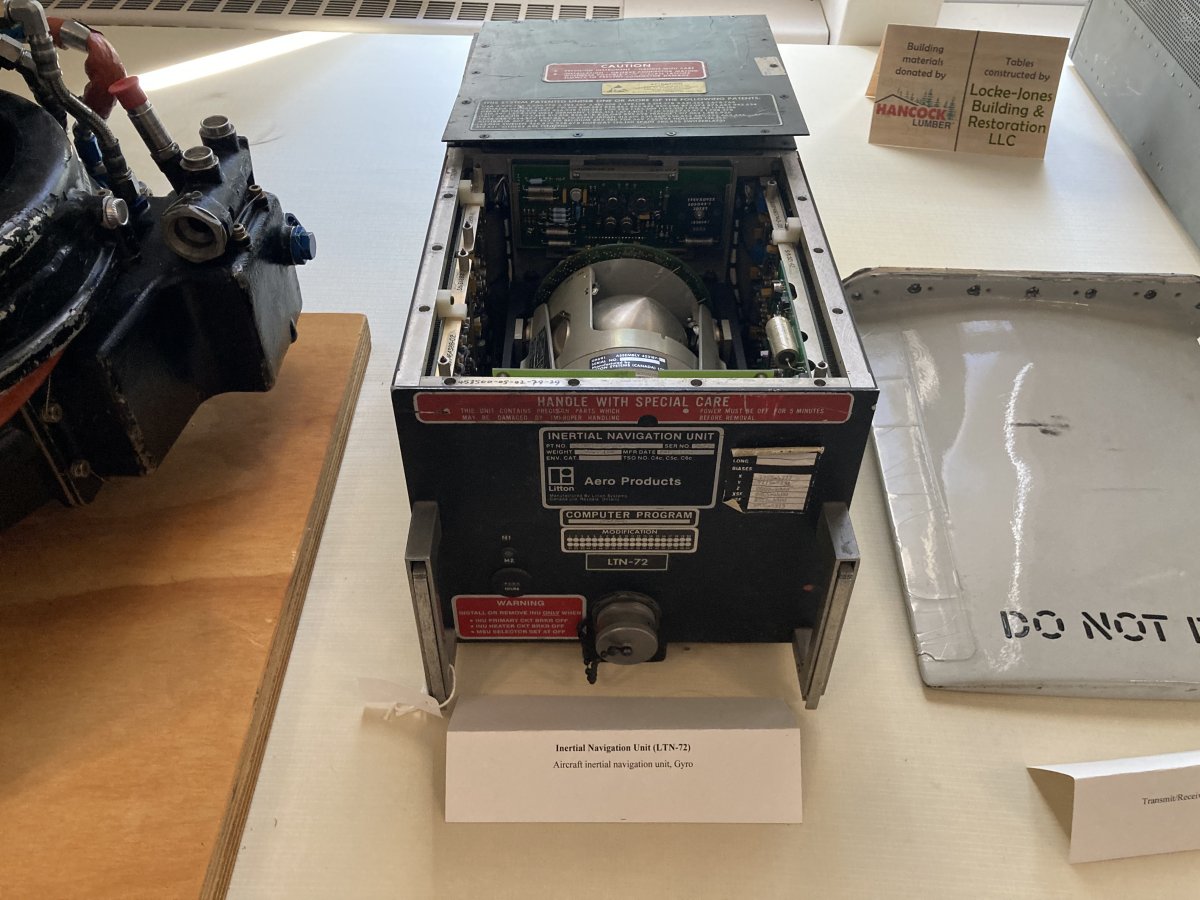 |
|
|
A closer look at the innerds of the Litton 72. It was an inertial unit, so things whirred around and sensors measured how much they moved, and from that they could tell how the plane had moved. It was very important for the NAVCOM to "initialize" the inertials on the ground, so the unit knew where it started from.
|
| |
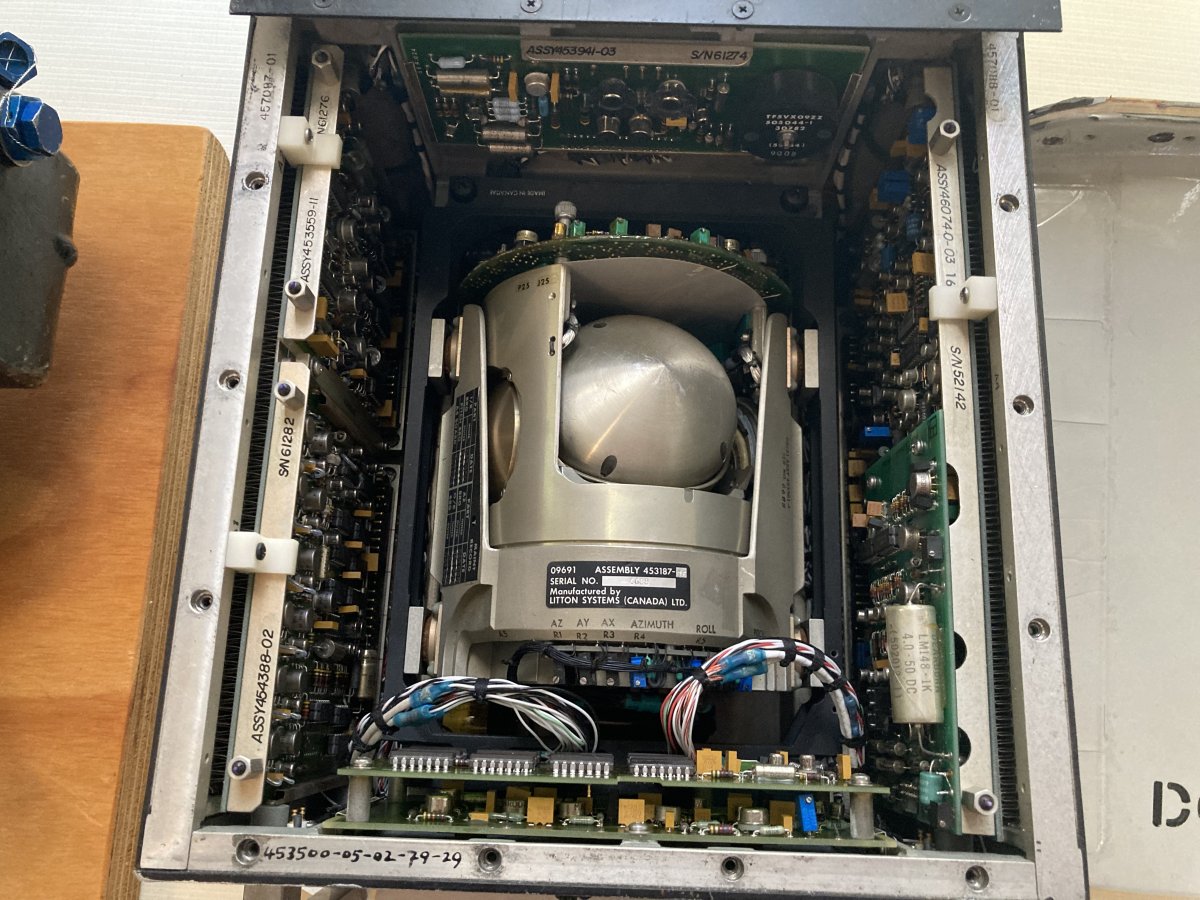 |
|
|
Another famous box, the AQA-7 -- the acoustic processor. We found and tracked submarines mainly by listening for them passively. We dropped sonobuoys in the water, which were hydrophones. They transmitted what they heard up to the P-3 and the AQA-7 processed the acoustical information into displays and on paper so the enlisted operators (AWs) could tell if there was a sub down there.
|
| |
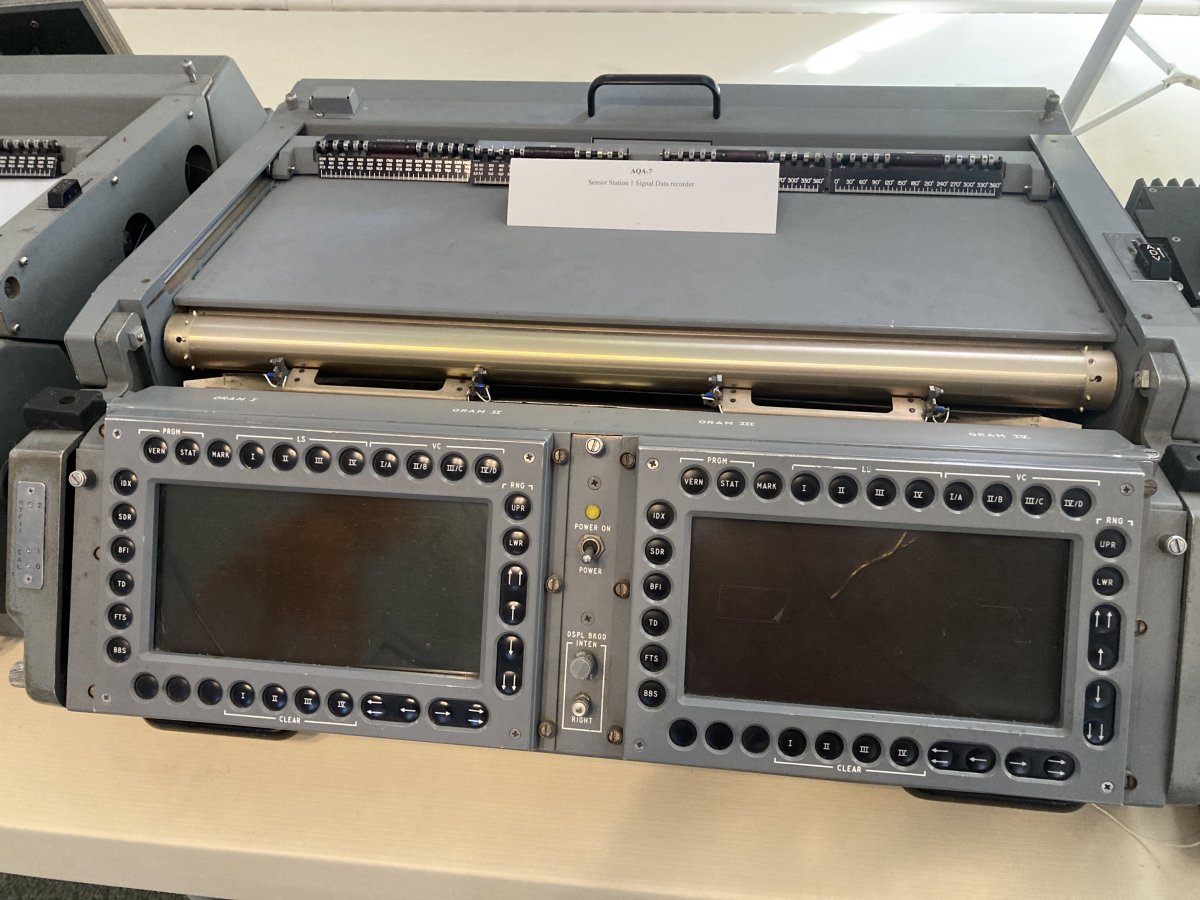 |
|
|
Another part of the AQA-7, essentially the printer.
|
| |
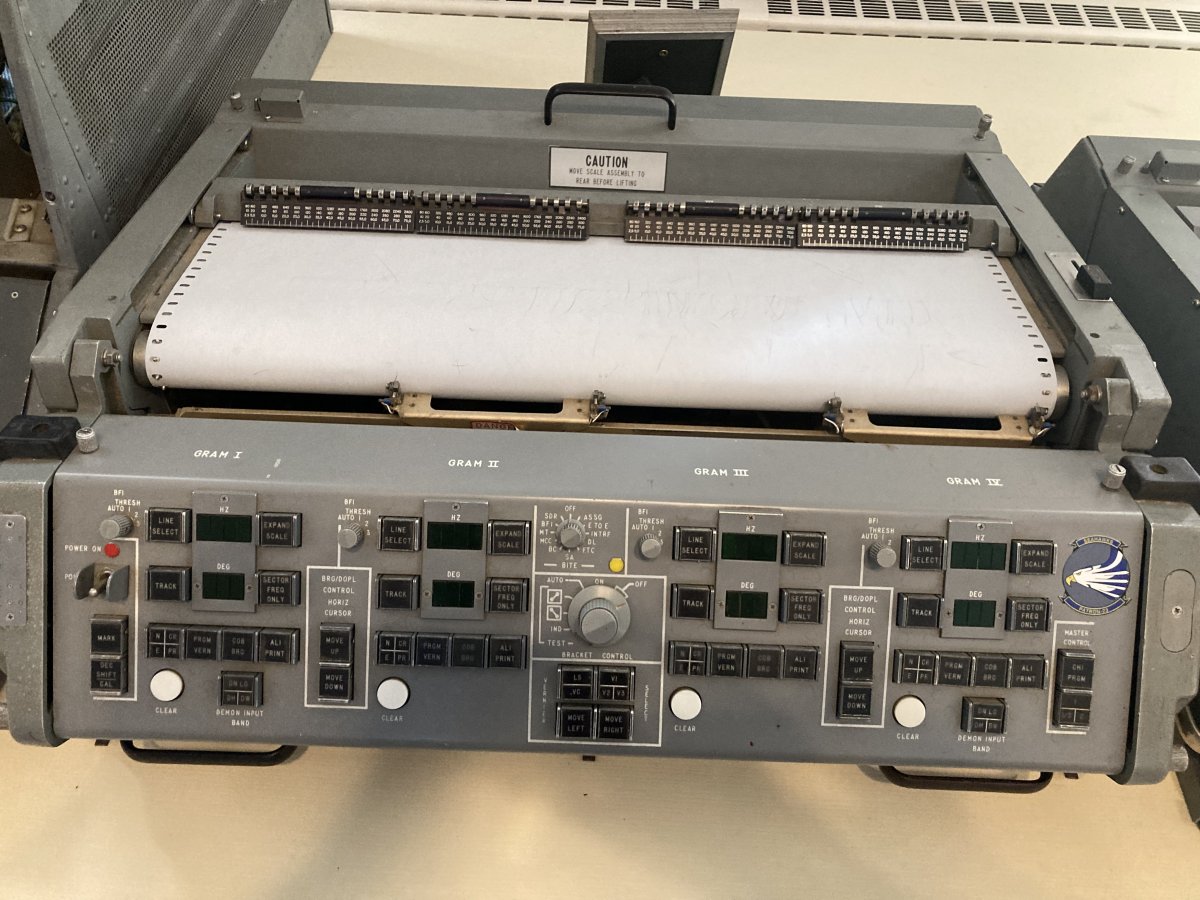 |
|
| Another exibit that was very interesting to me was this sonobuoy that was taken apart and its components laid out on the table. I've never seen this before, despite having dropped hundreds of these suckers into the water. This is a DIFAR buoy -- the SSQ-53. It's hydrophone listened and if it heard anything it could give you a directional bearing to the noise source. |
| |
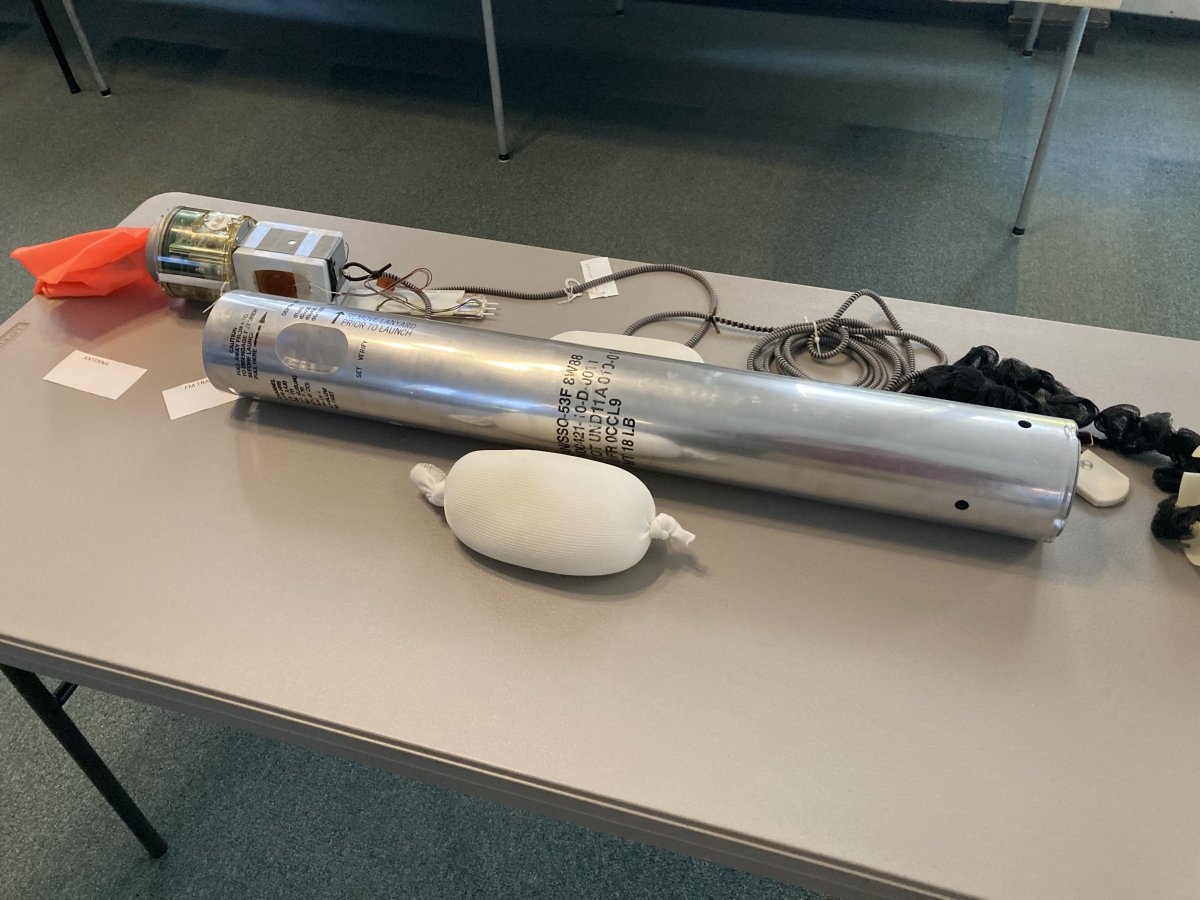 |
|
| You could set the depth of the hydrophone to short, medium or deep as I recall. |
| |
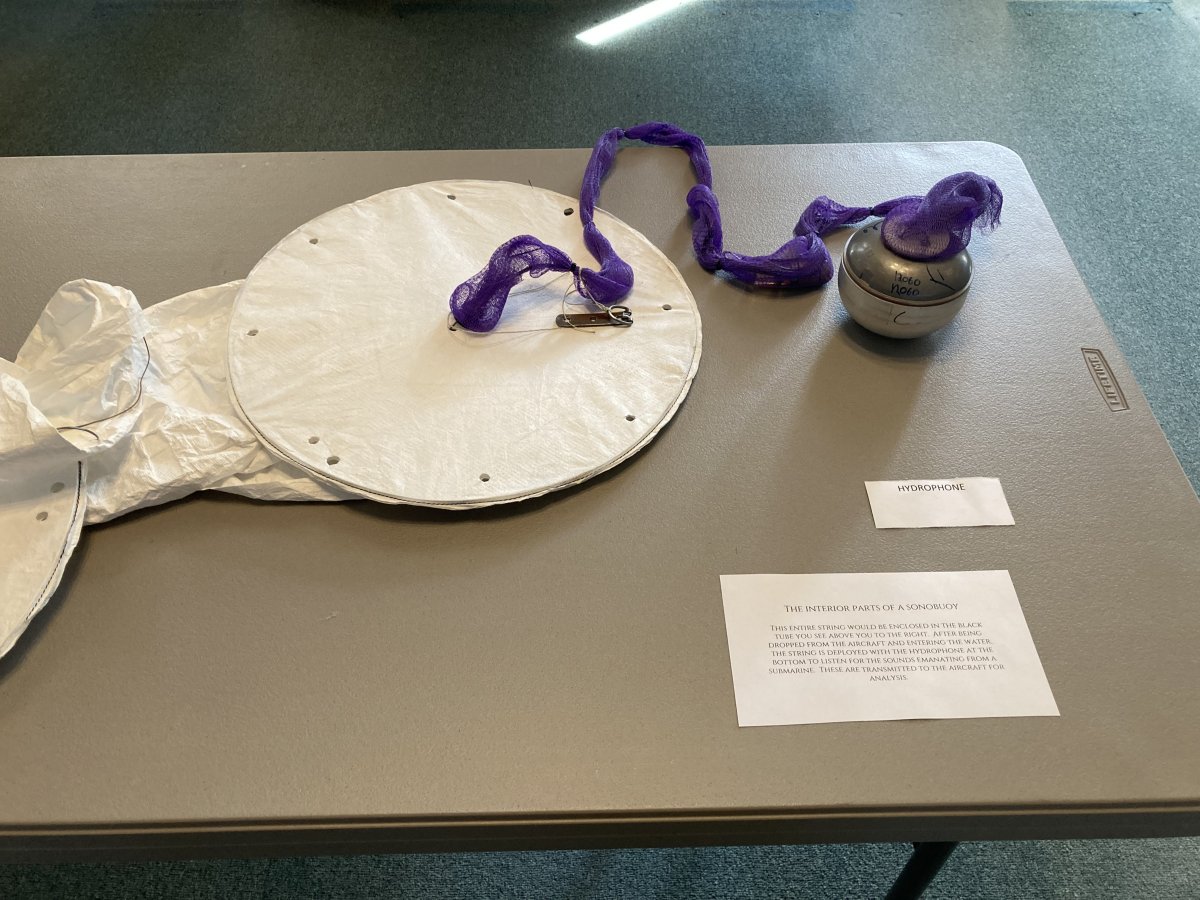 |
|
| Floating on the surface was this unit, which contained the FM transmitter and antenna, to transmit the signal up to the P-3. Earlier versions of the buoy had fixed radio channels but later ones were programmable which was very nice. You didn't want to have two buoys transmissing on the same frequency simultaneously. |
| |
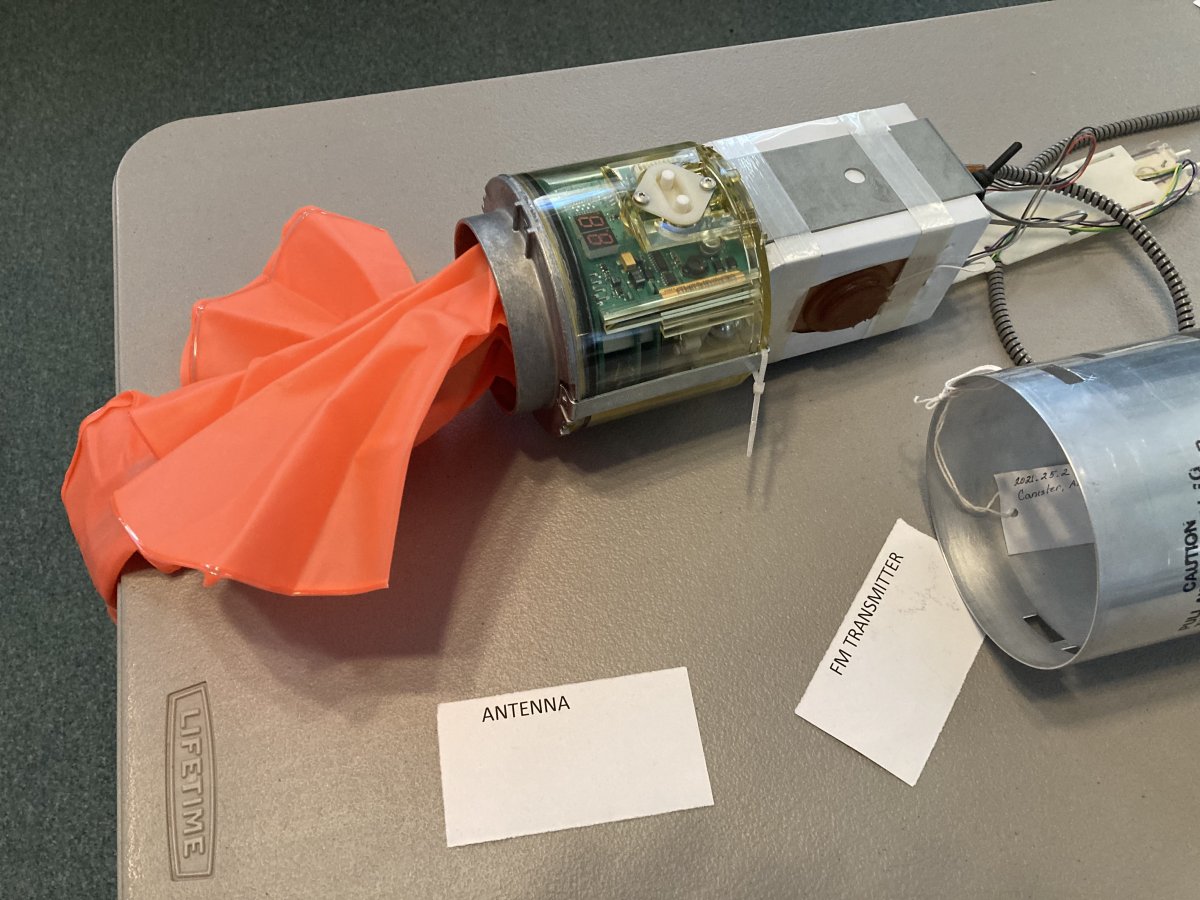 |
|
|
Another part of the museum which was fascinating to me was the U.S. Naval Survival, Evasion, Resistance and Escape (SERE) school. The SERE school was based at Brunswick Naval Air Station. The classroom portion was done on base, and the fieldwork done at a facility up in the mountains. Officers and enlisted who flew had to attend this school at some point in their careers. For some reason, I didn't attend SERE during my junior officer tour so I got to do it just prior to my second tour as a Lieutenant Commander. Which meant I was the senior man in my school class. Which meant I got "special treatment", if you know what I mean.
This is an example of a shelter they taught us how to building, using the standard army poncho and some parachute cord. I did make one of these and sleep in it in the Maine mountains one night in October, when it was snowing.
|
| |
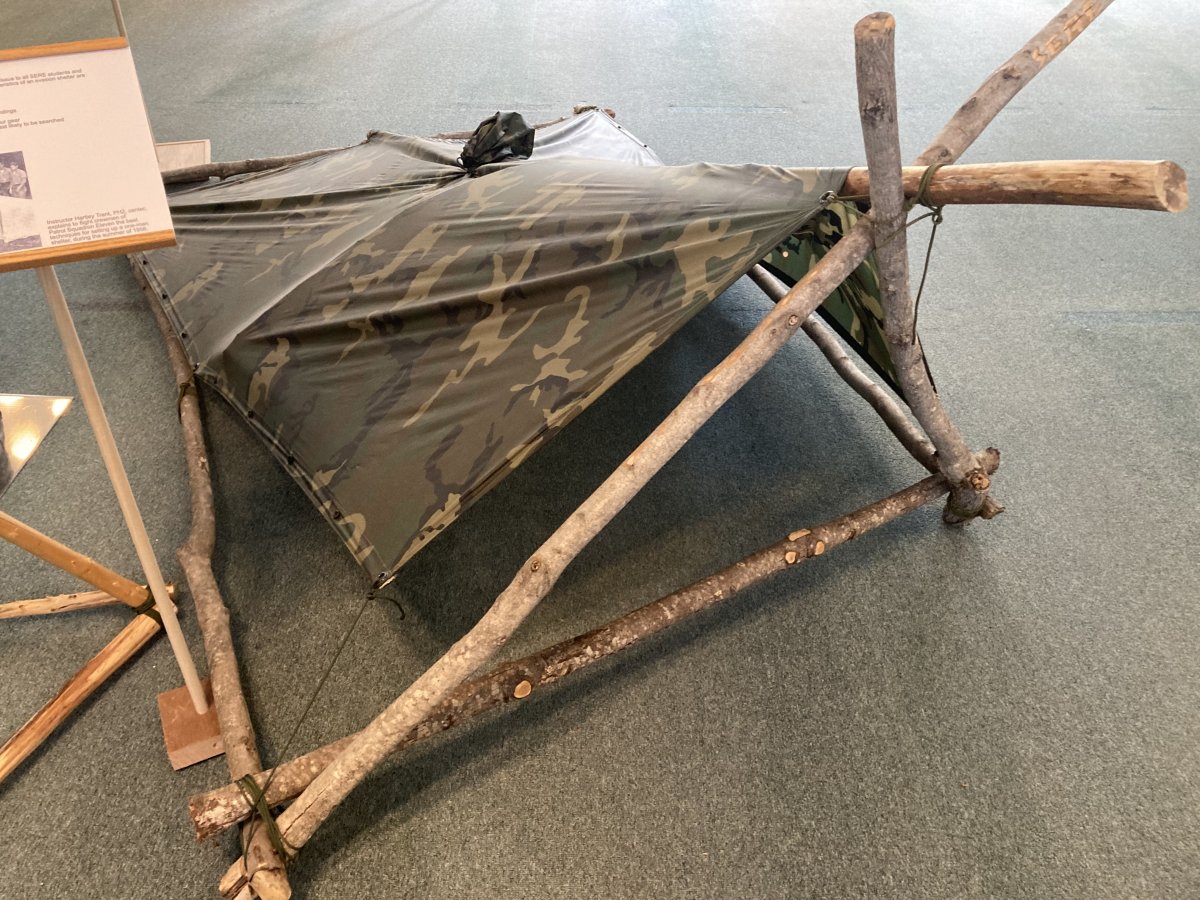 |
|
|
I've always wondered where the SERE location was in Maine, and now I know. It's in Redington, Maine, north of Brunswick, in the middle of nowhere.
I really enjoyed touring the museum; it brought back a lot of memories.
|
| |
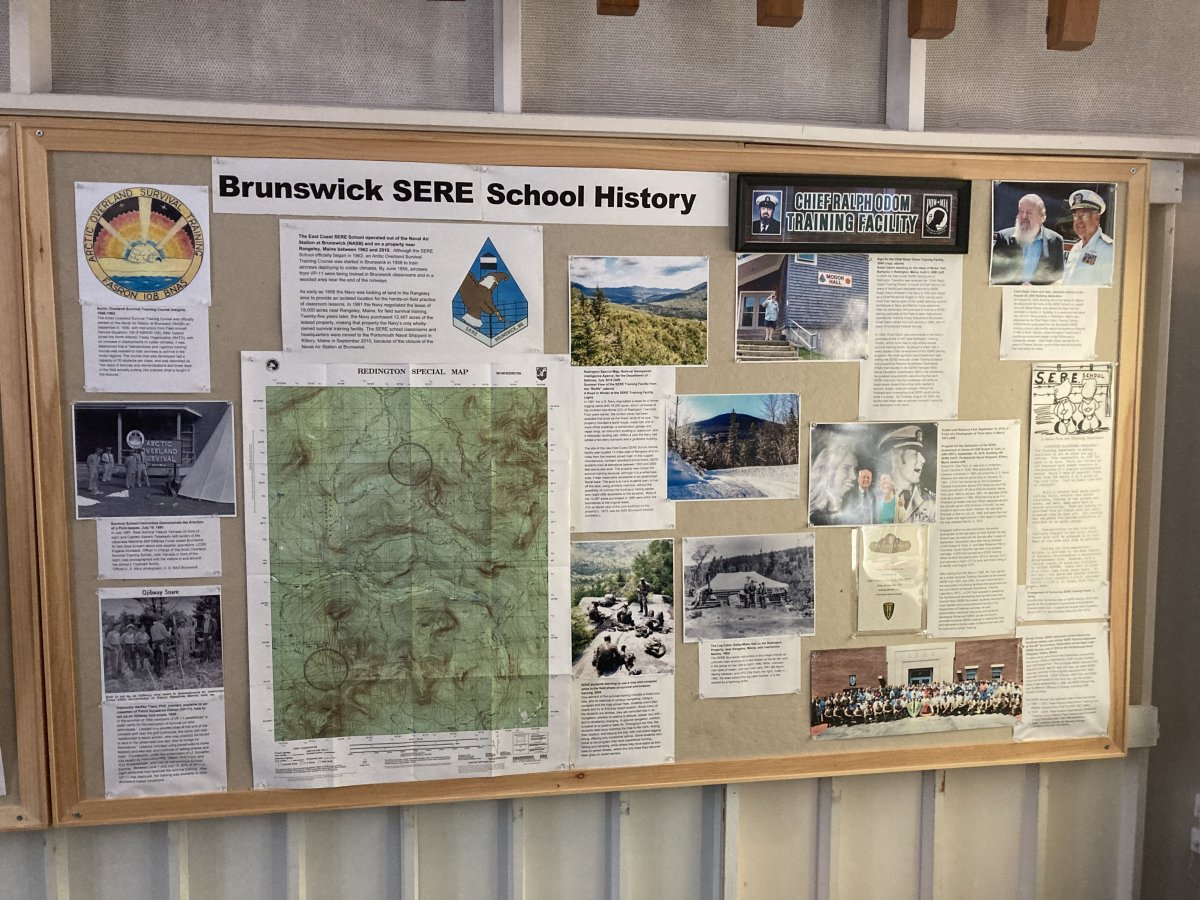 |
|
|
Across from the museum is a good example of the Naval Air Station's privitization: the Wild Oats Cafe/Bakery/Deli.
|
| |
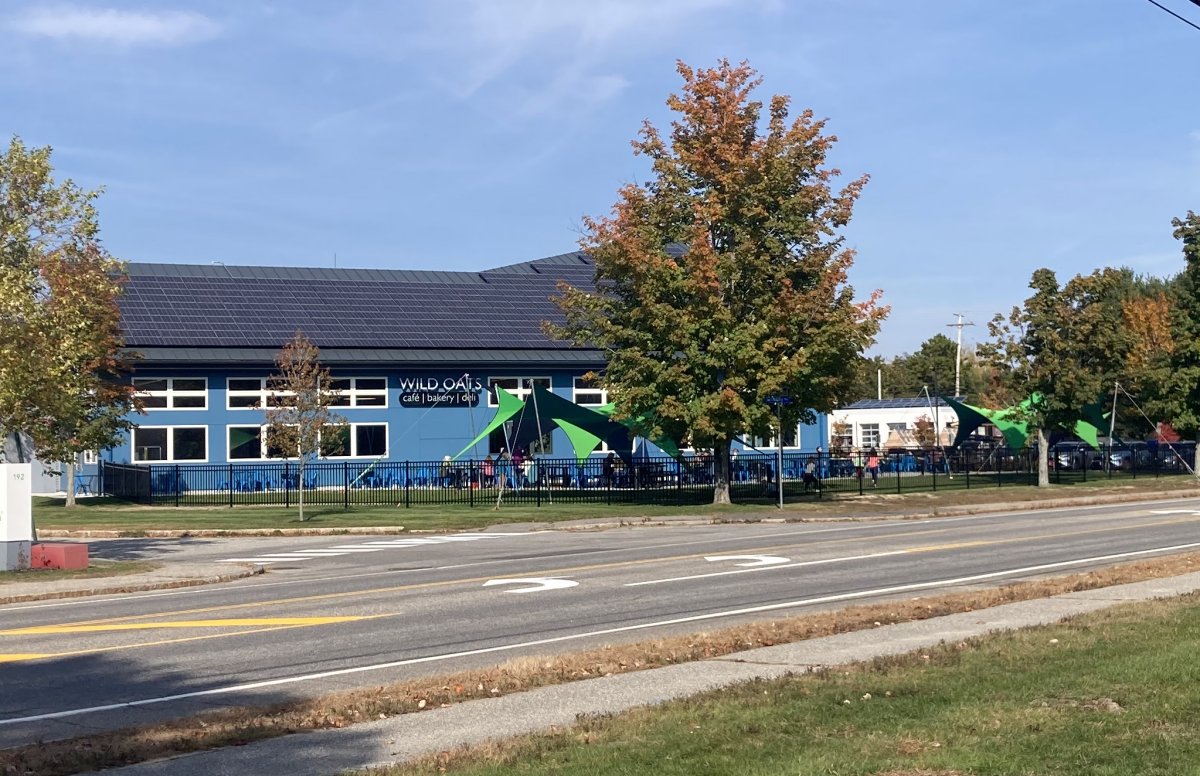 |
|
| This is Hangar Six, built in 2003, long after I left Brunswick. It could hold six P-3s, wingtip to wingtip. At a cost of $31.4 million, it was the most expensive building ever to be built in coastal Maine. Hangar Six was planned to accomodate the new P-8 Poseidon (basically a 737 jet). Unfortunately, the Navy only got six years use out of the hangar, as the last P-3 left in 2009, the runways were closed in 2010, and the base closed in 2011. |
| |
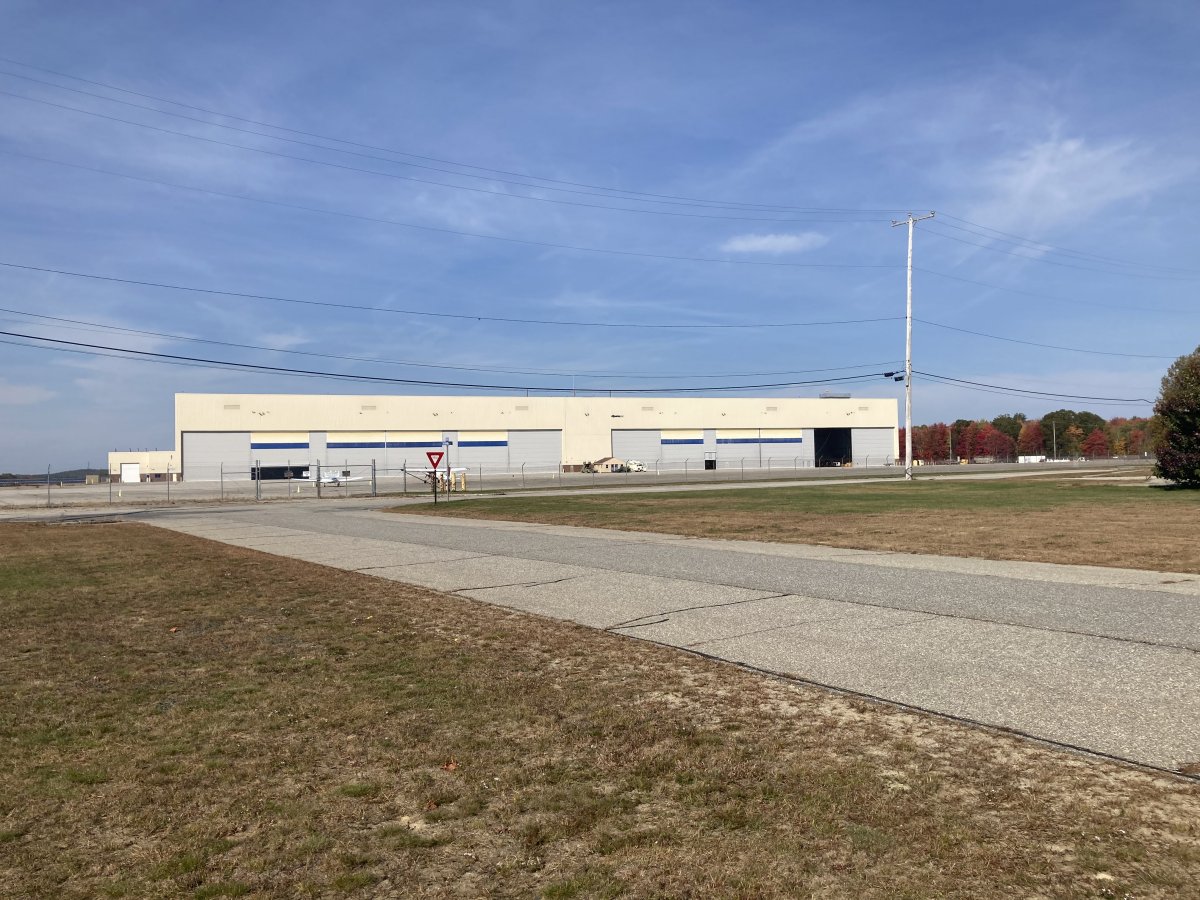 |
|
| The old Control Tower and Air Operations building, completed in 1952. Now it houses the FBO and various tennants. A new control tower on the other side of the field replaced this tower in 2006. The new tower was only in use four years before the base closed. |
| |
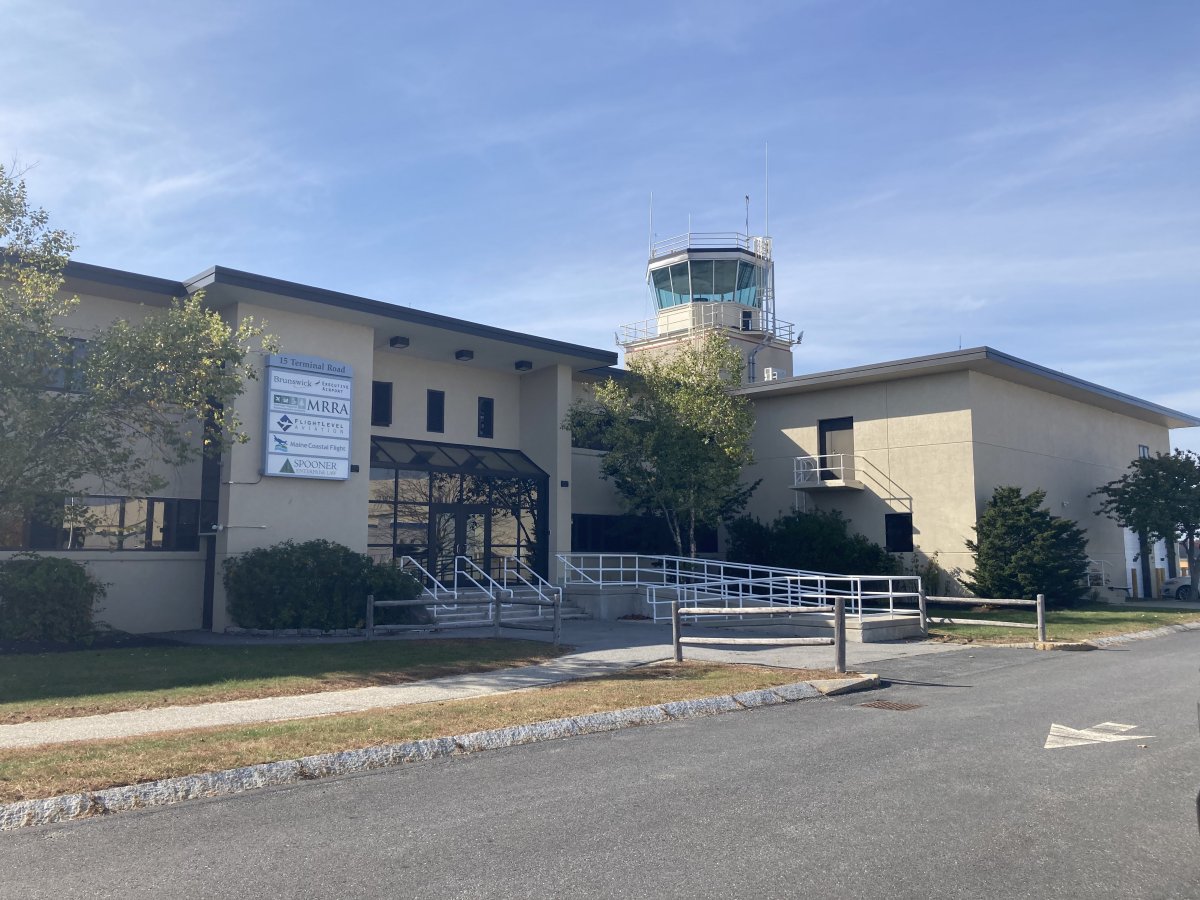 |
|
| |
| |
| |
|
|
|
|
|
|








































